Thrane and Thrane A S 6300 SAILOR 6311 MF/HF 150W DSC CLass A FCC User Manual SAILOR6301 UM
Thrane & Thrane A/S SAILOR 6311 MF/HF 150W DSC CLass A FCC SAILOR6301 UM
Contents
manual system
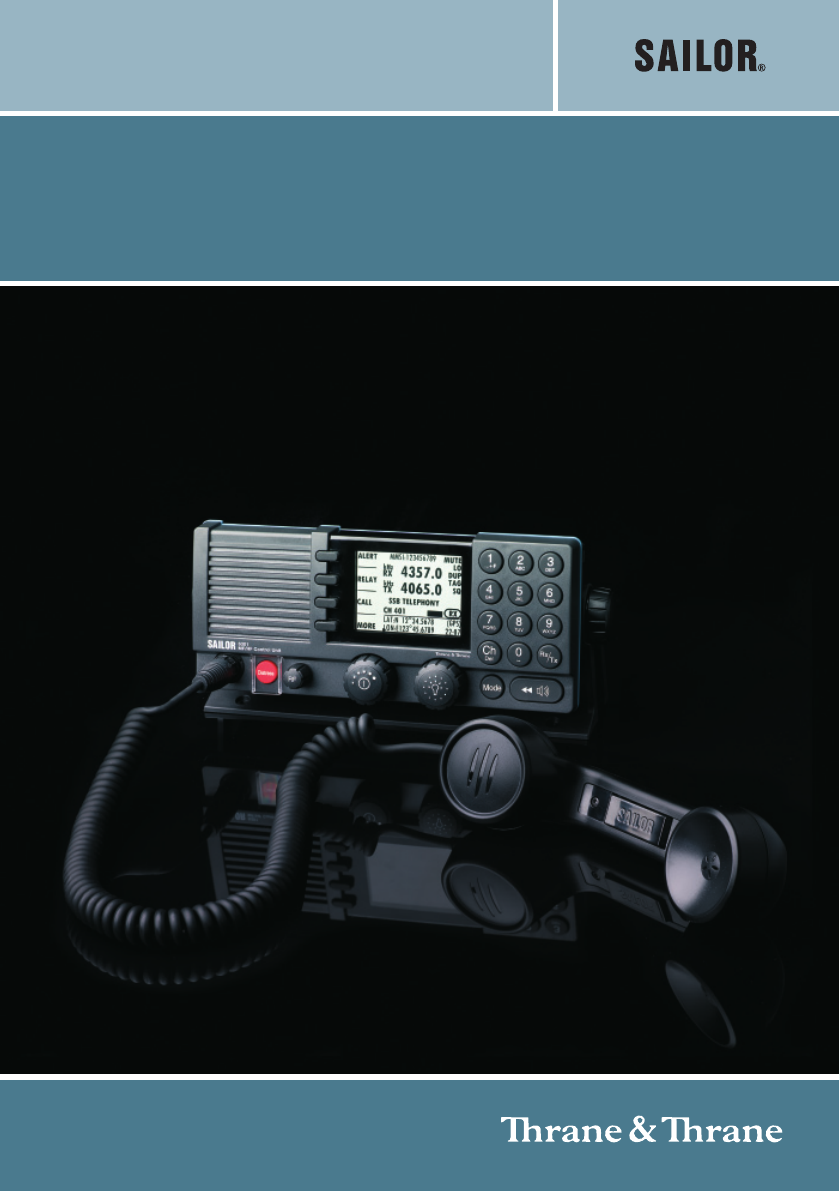
SAILOR 6300 MF/HF DSC
150W/250W/500W
USER MANUAL
jho
18. februar 2011
SAILOR 6300 MF/HF DSC
150W/250W/500W
User manual
Document number: 98-131070-A
Release date: February 16, 2011
Disclaimer
Any responsibility or liability for loss or damage in connection with the use of this
product and the accompanying documentation is disclaimed by Thrane & Thrane. The
information in this manual is provided for information purposes only, is subject to
change without notice and may contain errors or inaccuracies.
Manuals issued by Thrane & Thrane are periodically revised and updated. Anyone
relying on this information should acquire the most current version e.g. from
http://www.thrane.com or from the distributor.
Thrane & Thrane is not responsible for the content or accuracy of any translations or
reproductions, in whole or in part, of this manual from any other source.
Copyright
© 2011 Thrane & Thrane A/S. All rights reserved. Printed in Denmark.
Trademark Acknowledgements
• Thrane & Thrane is a registered trademark of Thrane & Thrane A/S in the European
Union and the Unites States of America.
•SAILOR is a registered trademarks of Thrane & Thrane A/S.
• Other product and company names mentioned in this manual may be trademarks or
trade names of their respective owners.
GPL notification
The software included in this product contains copyrighted software that is licensed
under the GPL/LGPL. The verbatim licenses can be found online at:
http://www.gnu.org/licenses/old-licenses/gpl-2.0.html
http://www.gnu.org/licenses/old-licenses/lgpl-2.1.html
You may obtain the complete corresponding source code from us for a period of three
years after our last shipment of this product, which will be no earlier than December 31,
2015, by sending a money order or check for DKK 50 to:
SW Technology/GPL Compliance,
Thrane & Thrane A/S,
Lundtoftegaardsvej 93D
2800 Lyngby
DENMARK
Please write "source for product SAILOR 6300 MF/HF DSC" in the memo line of your
payment.
You may also find a copy of the source at http://www.thrane.com/foss.
This offer is valid to anyone in receipt of this information.
Warranties
Any attempt to install or execute software not supplied by Thrane & Thrane on this
device will result in the warranty being void. Any attempt to modify the software on this
device in a way not specified by Thrane & Thrane will result in the warranty being void.

iv
Safety summary 1
The following general safety precautions must be observed during all
phases of operation, service and repair of this equipment. Failure to comply
with these precautions or with specific warnings elsewhere in this manual
violates safety standards of design, manufacture and intended use of the
equipment. Thrane & Thrane assumes no liability for the customer's failure
to comply with these requirements.
GROUND THE EQUIPMENT
To minimise shock hazard, the equipment chassis and cabinet must be
connected to an electrical ground and the cable instructions must be
followed.
DO NOT OPERATE IN AN EXPLOSIVE ATMOSPHERE
Do not operate the equipment in the presence of flammable gases or fumes.
Operation of any electrical equipment in such an environment constitutes a
definite safety hazard.
KEEP AWAY FROM LIVE CIRCUITS
Operating personnel must not remove equipment covers. Component
replacement and internal adjustment must be made by qualified
maintenance personnel. Do not service the unit with the power cable
connected. Always disconnect and discharge circuits before touching them.
Service
General service must be done by skilled service personnel.
Caution! Electric shock hazard. Do not open the
equipment. Only skilled service personnel may
service and repair the equipment.
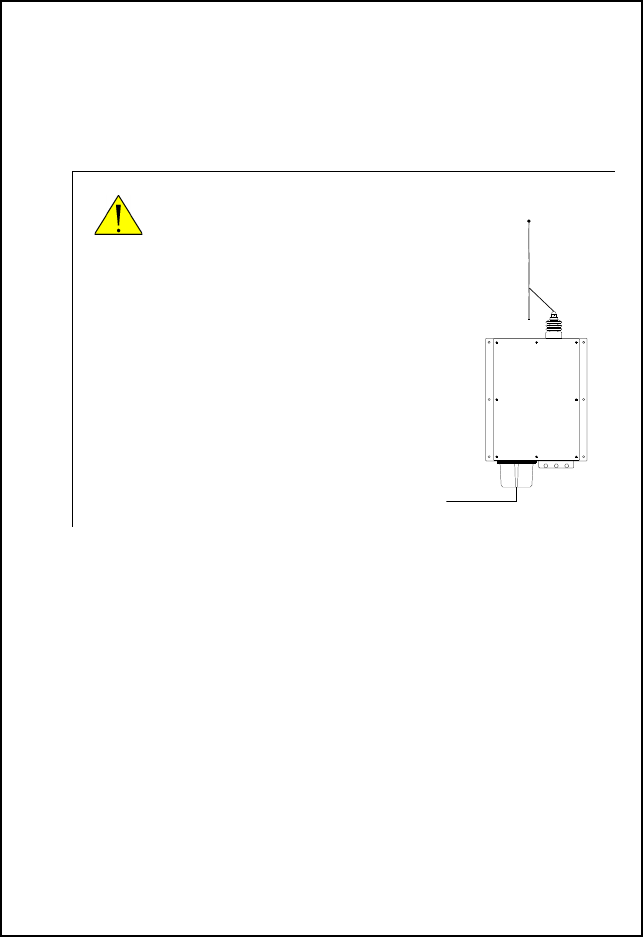
v
RF exposure hazards and instructions
Your Thrane & Thrane radio generates electromagnetic RF (radio frequency)
energy when transmitting. To ensure that you and those around you are not
exposed to excessive amounts of energy and thus to avoid health hazards
from excessive exposure to RF energy, all persons must obey the following:
Warranty limitation
The radio is not a user maintainable unit, and under no circumstances
should the unit be opened except by authorized personnel. Unauthorized
opening of the unit will invalidate the warranty.
Caution! Never touch the
Antenna Tuning Unit or
feeder wire when the
MF/HF radio is
transmitting. High
voltage which can cause
death or serious injury
is present at the
locations shown in the
illustration below.
Unit
Antenna Tuning
MF/HF
SAILOR 638x
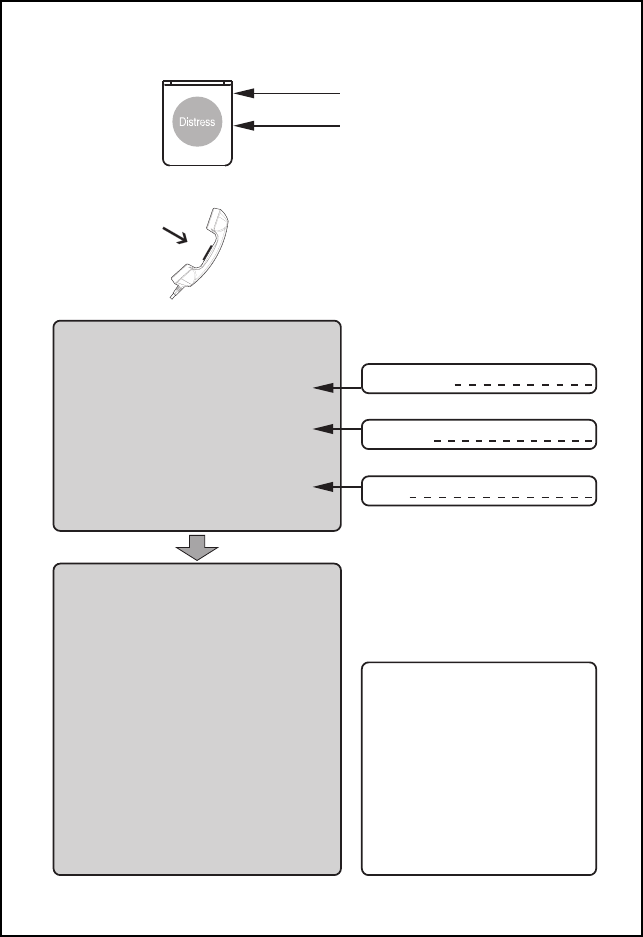
vi
Emergency calls
MM
MM
MAA
AA
AYY
YY
YDD
DD
DAA
AA
AYY
YY
Y
NANA
NANA
NAMEME
MEME
ME of the VV
VV
VEE
EE
ESS
SS
SSS
SS
SELEL
ELEL
EL in distress
CC
CC
CALAL
ALAL
ALLL
LL
LSS
SS
SIGNIGN
IGNIGN
IGN or other IDENIDEN
IDENIDEN
IDENTT
TT
TIFICIFIC
IFICIFIC
IFICAA
AA
ATT
TT
TIONION
IONION
ION
MM
MM
MMM
MM
MS
S
SS
SII
II
I
(If the initial alert is sent by DSC)
PP
PP
POO
OO
OSS
SS
SITIT
ITIT
ITIONION
IONION
ION
given as ll
ll
latat
atat
atitit
itit
itudeude
udeude
ude and longitlongit
longitlongit
longitudeude
udeude
ude
or
If latitude and longitude are not known
or if time is insufficient,
in relation to a known geographical location
NANA
NANA
NA
TURETURE
TURETURE
TURE of distress
Kind of AA
AA
ASS
SS
SSS
SS
SII
II
ISS
SS
STT
TT
TANCANC
ANCANC
ANCEE
EE
E required
Any other useful INFINF
INFINF
INFOROR
OROR
ORMM
MM
MAA
AA
ATT
TT
TIONION
IONION
ION
MM
MM
MAA
AA
AYY
YY
YDD
DD
DAA
AA
AYY
YY
Y-M-M
-M-M
-MAA
AA
AYY
YY
YDD
DD
DAA
AA
AYY
YY
Y-M-M
-M-M
-MAA
AA
AYY
YY
YDD
DD
DAA
AA
AYY
YY
Y
This is
NANA
NANA
NAME-NAME-NA
ME-NAME-NA
ME-NAME-NAME-NA
ME-NAME-NA
ME-NAMEME
MEME
ME
CC
CC
CALAL
ALAL
ALLL
LL
LSS
SS
SIGNIGN
IGNIGN
IGN
or other IDENTIFICATION
MM
MM
MMM
MM
MSS
SS
SII
II
I
(If the initial alert is sent by DSC)
Use the HANDHAND
HANDHAND
HANDSS
SS
SETET
ETET
ET
for voice calling
LL
LL
Lifif
ifif
ift Ct C
t Ct C
t Covov
ovov
overer
erer
er
PP
PP
Prr
rr
ree
ee
ess
ss
ss RED Buttons RED Button
s RED Buttons RED Button
s RED Button
until beep sounds continuously
(more than 3 seconds)
SHIP‘s NAME:
CALLSIGN:
MMSI:
OWN OWN
OWN OWN
OWN IDID
IDID
ID
99-132140
Press
VHF
MF
HF4
HF6
HF8
HF12
HF16
Channel 70
2187.5 kHz
4207.5 kHz
6312.0 kHz
8414.5 kHz
12577.0 kHz
16804.5 kHz
Channel 16
2182.0 kHz
4125.0 kHz
6215.0 kHz
8291.0 kHz
12290.0 kHz
16420.0 kHz
- - - - -
2174.5 kHz
4177.5 kHz
6268.0 kHz
8376.5 kHz
12520.0 kHz
16695.0 kHz
DD
DD
DSCSC
SCSC
SC RR
RR
Radiadi
adiadi
adiotot
otot
otelephonelephon
elephonelephon
elephonyy
yy
yNBDPNBDP
NBDPNBDP
NBDP
DIDI
DIDI
DISS
SS
STRETRE
TRETRE
TRESS
SS
SSS
SS
S and C and C
and C and C
and COMOM
OMOM
OMMM
MM
MUNICUNIC
UNICUNIC
UNICAA
AA
ATT
TT
TIONION
IONION
ION
FREQUENCIEFREQUENCIE
FREQUENCIEFREQUENCIE
FREQUENCIESS
SS
S
_ _ _ _ _ _ _ _ _ _ _ _ _ _ _ _ _ _ _ _ _ _ _ _ _ _ _ _ _ _ _ _ _ _ _ _
Remember to use the correct HF-procedures
Don‘t forget your EPIRB is the secondary means of
alerting
_ _ _ _ _ _ _ _ _ _ _ _ _ _ _ _ _ _ _ _ _ _ _ _ _ _ _ _ _ _ _ _ _ _ _ _

vii
Preface 2
Radio for occupational use
The SAILOR 6300 MF/HF DSC fulfils the requirements of the EC
directive 1999/5/EC, Radio and Telecommunications Terminal
Equipment and is intended for use in maritime environment.
SAILOR 6300 MF/HF DSC is designed for occupational use only and
must be operated by licensed personnel only.
SAILOR 6300 MF/HF DSC is not intended for use in an uncontrolled
environment by general public.
Manual overview
This manual has the following chapters:
• Introduction contains a description of the MF/HF radio and its
components.
•Operation explains how to start up the radio, make and receive
voice, Distress and DSC calls, including how to handle multiple
sessions, Watch and Replay.
•Service & maintenance contains support information including
a weekly check and a troubleshooting guide.

viii
Training information
(for FCC approved equipment) 3
The SAILOR 6300 MF/HF DSC is designed for occupational use only
and is also classified as such. It must be operated by licensed
personnel only. It must only be used in the course of employment
by individuals aware of both the hazards as well as the way to
minimize those hazards
The radio is thus NOT intended for use in an uncontrolled
environment by general public. The SAILOR 6300 MF/HF DSC has
been tested and complies with the FCC RF exposure limits for
Occupational Use Only. The radio also complies with the following
guidelines and standards regarding RF energy and
electromagnetic energy levels including the recommended levels
for human exposure:
• FCC OET Bulletin 65 Supplement C, evaluating compliance with
FCC guidelines for human exposure to radio frequency
electromagnetic fields.
• American National Standards Institute (C95.1) IEEE standard for
safety levels with respect to human exposure to radio frequency
electromagnetic fields, 3 kHz to 300 GHz
• American National Standards Institute (C95.3) IEEE
recommended practice for the measurement of potentially
hazardous electromagnetic fields - RF and microwaves.
Below the RF exposure hazards and instructions in safe operation
of the radio within the FCC RF exposure limits established for it are
described.
Warning
Your Thrane & Thrane radio set generates electromagnetic RF
(radio frequency) energy when it is transmitting. To ensure that
you and those around you are not exposed to excessive amounts of
that energy (beyond FCC allowable limits for occupational use) and
thus to avoid health hazards from excessive exposure to RF
energy, FCC OET bulletin 65 establishes an Maximum Permissible

ix
Exposure (MPE) radius of 6 ft. (1.8m) for the maximum power of
your radio (150 W selected) with a whip antenna having a
maximum gain of 3.0 dBi. This means all persons must be at least
6 ft. (1.8m) away from the antenna when the radio is transmitting.
Installation
1. A whip antenna with a maximum power gain of 3 dBi must be
mounted at least 12.6 ft. (3.9m) above the highest deck where
people may be staying during radio transmissions. The distance
is to be measured vertically from the lowest point of the
antenna. This provides the minimum separation distance which
is in compliance with RF exposure requirements and is based
on the MPE radius of 6 ft. (1,8m) plus the 6.6 ft. (2.0 m) height
of an adult.
2. On vessels that cannot fulfil requirements in item 1, the antenna
must be mounted so that its lowest point is at least 6 ft. (1.8m)
vertically above the heads of people on deck and all persons
must be outside the 6 ft. (1.8 m) MPE radius during radio
transmission.
• Always mount the antenna at least 6 ft (1.8 m) from possible
human access.
• Never touch the antenna when transmitting
• Use only authorized T&T accessories.
3. If the antenna has to be placed in public areas or near people
with no awareness of the radio transmission, the antenna must
be placed at a distance not less than 12 ft. (3.6 m) from possible
human access.
Failure to observe any of these warnings may cause you or other
people to exceed FCC RF exposure limits or create other dangerous
conditions.

x
Related documents
Title and description Document number
SAILOR 630x MF/HF Control Unit,
Installation guide
98-132396
SAILOR 6300 MF/HF Transceiver Unit &
Antenna Tuning Unit 150/250/500W,
Installation Guide
98-133081
SAILOR 6000 MF/HF 150/250W System,
Installation manual
98-130890
SAILOR 6000 MF/HF 500 W System,
Installation manual
98-131993
SAILOR 6300 MF/HF Radiotelex, User
Manual
98-132519
SAILOR 6101 and 6103 Alarm Panel,
Installation and user manual
98-130981
Emergency call sheet 98-132369

xi
Table of contents
Chapter 1 Introduction
SAILOR 6300 MF/HF DSC .................................................... 1
Accessories available .........................................................5
Chapter 2 Operation
Overview ............................................................................7
General use and navigation ...............................................7
Basic MF/HF radio communication ....................................15
Watch function ..................................................................17
DSC calls .......................................................................... 18
Phone book ......................................................................34
Radiotelex ........................................................................36
Replay function ................................................................36
Setup ...............................................................................37
Chapter 3 Service & maintenance
Contact for support ...........................................................45
Maintenance ....................................................................45
Troubleshooting guide .....................................................48
Warranty and returning units for repair ............................51
Glossary .........................................................................................53
Index .........................................................................................55

Table of contents
xii
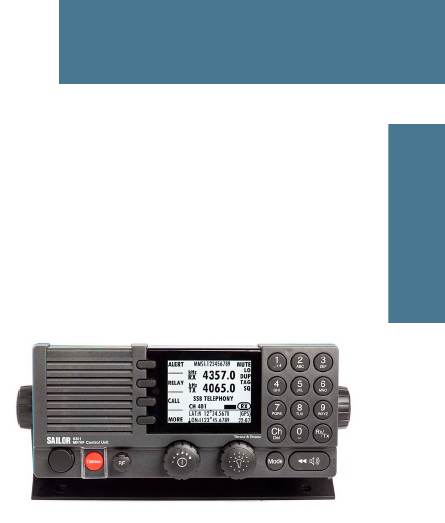
1
Chapter 1
1111
Introduction
Introduction 1
SAILOR 6300 MF/HF DSC
The SAILOR 6300 MF/HF DSC
is a modular and flexible
MF/HF radio that can be
customized to your specific
needs for MF/HF
communication on workboats,
high seas fishing vessels and
merchant vessels of all kinds.
It offers simplex and semi-duplex SSB radiotelephony in the maritime mobile
frequency bands from 150 kHz to 30 MHz. Services include voice
transmissions, watch function, DSC operations (Distress calls, position info,
Distress relay and more) and AM Broadcast. Optional are the 6-channel DSC
watch keeping receiver, AM Broadcast and telex.
The large display shows Rx and Tx frequencies and status, MMSI number,
position information, system and channel properties, including indicators for
transmission power and received signal strength. It is easy to read from
almost all angles and the display light can be adapted to dark environments.
Then red text is shown on a black background providing a good visibility even
at night while protecting your night vision.
DSC operations are made using the four soft keys next to the display. The
MF/HF radio can replay the last 240 s of received voice messages. This is a
useful feature to minimize misunderstandings and to record messages when
the radio is unattended. The SAILOR 6300 MF/HF DSC has an Ethernet
interface to connect to other equipment for control and monitoring.
The SAILOR 6300 MF/HF DSC is available as a basic MF radio that can be
upgraded with an HF option and a telex option. Telexes are sent using the
SAILOR 6006 Message Terminal.

Chapter 1: Introduction
2 SAILOR 6300 MF/HF DSC
Features
Rugged and reliable design.
Full power range on all ITU channels: 1.6 — 30 MHz for 150 W, 250 W and
500 W systems (Reduced power in the frequency range 1.6 — 4.0 MHz for
500 W).
Powerful transceiver (150, 250 or 500 W).
Outdoor automatic antenna tuning unit.
Radiotelex using the SAILOR 6006 Message Terminal
Optionally 6 DSC Distress frequencies in one unit.
Intelligent scanning for Voice, DSC and radiotelex (optional).
Ethernet with ThraneLINK.
Compliant with GMDSS in sea areas A2, A3 and A4 (Wheelmark).
Fulfills DSC specification ITU493-13.
System overview
The MF/HF radio consists of a Control Unit with a handset, a Transceiver Unit
and an automatic Antenna Tuning Unit. The MF/HF radio is available in the
following power classes:
System Control Unit Transceiver Unit Antenna Tuning
Unit
SAILOR 6310 SAILOR 6301
Control Unit
DSC Class Aa
SAILOR 6361 MF/HF 150 W SAILOR 6381 ATU
SAILOR 6311 SAILOR 6362 MF/HF 150W
SAILOR 6320 SAILOR 6363 MF/HF 250 W
SAILOR 6350 SAILOR 6364 MF/HF 500 W SAILOR 6383 ATU
a. An additional SAILOR 6301 Control Unit can be added.
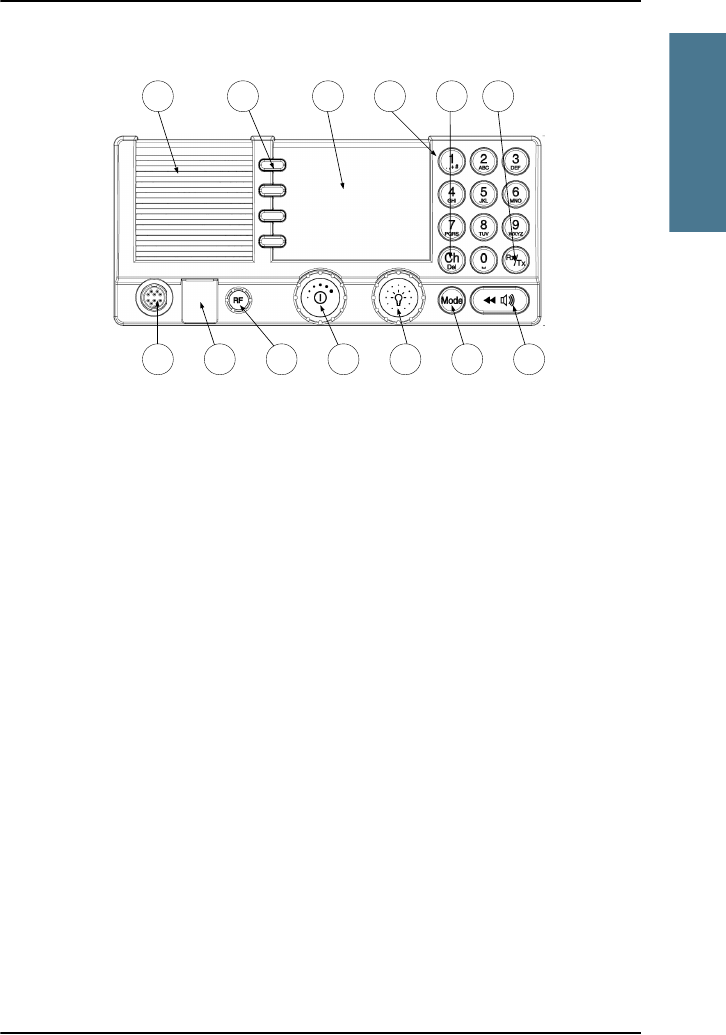
Chapter 1: Introduction
SAILOR 6300 MF/HF DSC 3
1111
Introduction
Controls on the front
1. Loudspeaker.
2. Four soft keys with function title in the display.
3. Large TFT color display.
4. Alphanumerical keys to enter Rx or Tx frequency or text strings.
5. CH button for channel selection.
6. Rx/Tx Key to enter Tx or RX frequency.
7. Connector for handset or handmicrophone.
8. Distress button for sending a Distress alert.
9. RF gain control (AGC/IF).
10. Volume knob with key-press function for power on/off.
11. Selector knob with key-press function for radio operation and setup.
12. Mode key to select the work mode: SSB, AM Broadcast, DSC, Telex.
13. Replay button to play back up to 240 s voice message.
1 2 3 4 6
78910 11 12 13
5
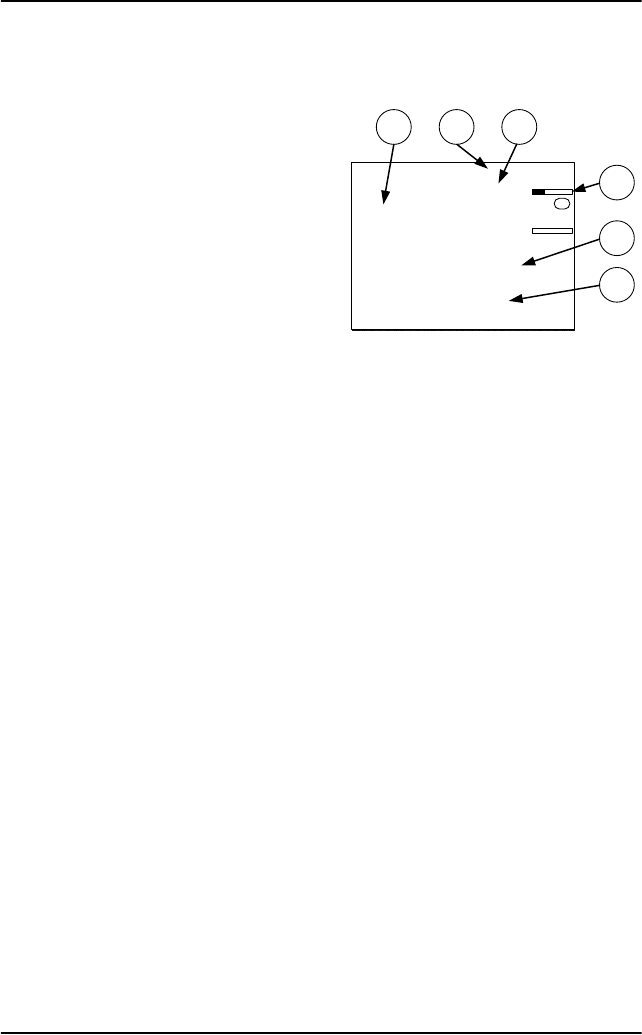
Chapter 1: Introduction
4 SAILOR 6300 MF/HF DSC
Display overview
The picture shows the display after
start-up. The display holds various
fields of information, depending on
the currently selected function.
1. Functions you can select with the
soft keys. If there are more than 4
functions in the list press the soft
key MORE to display further
functions.
2. System property icons and engagement status.
3. Current receive and transmit frequency.
4. Channel properties with status and indicators for received signal strength
(Rx) and transmission power (Tx).
5. Service line containing mode of operation and channel number.
6. DSC window with MMSI number, position information and source.
For a detailed description of the information shown for each of the functions
available see the chapter Operation on page 7.
1 2 3
4
5
CALL
ALERT
DROBOS
MORE
MMSI: 123456789
N 12°34.5678
E 123°45.6789 22:07
GPS
4357.0
4065.0
SSB 401
SQ
kHz/TX
RX
6
kHz/
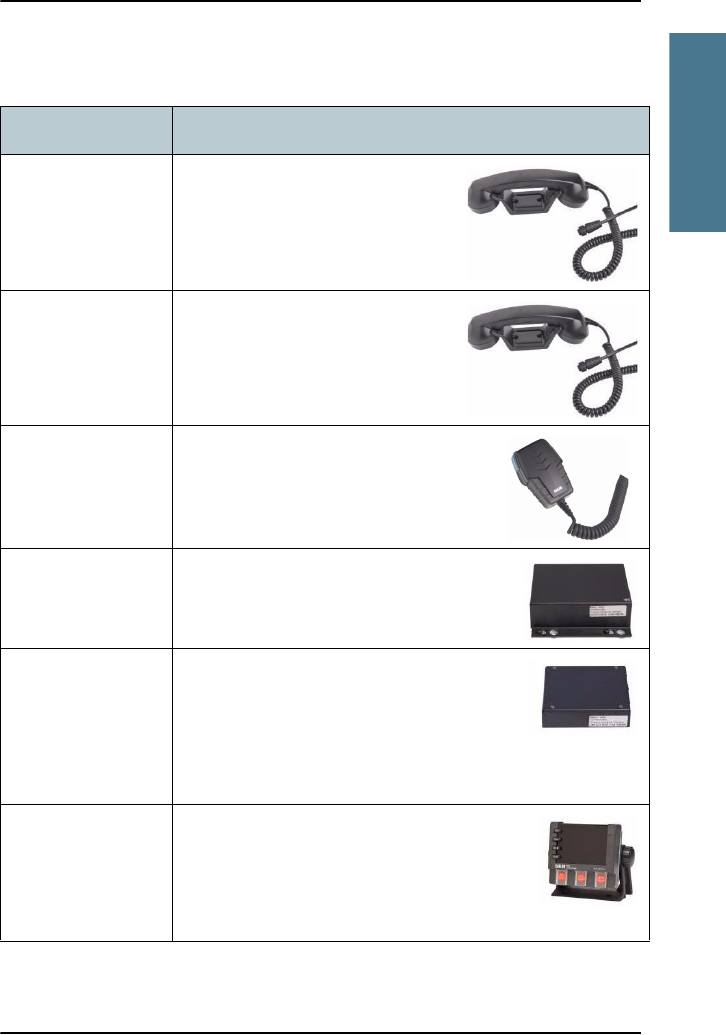
Chapter 1: Introduction
Accessories available 5
1111
Introduction
Accessories available
Accessory Description
SAILOR 6201
Handset with
cradle
One SAILOR 6201 Handset with
cradle is included in the delivery of
the SAILOR 6300 MF/HF DSC. If
needed, you can connect another 2
SAILOR 6201 Handsets.
SAILOR 6203
Handset with
cradle
SAILOR 6203 with cradle, waterproof
to IPx6.
SAILOR 6202 Hand
Microphone
You can use the SAILOR 6202 Hand
Microphone (waterproof to IPx6 and IPx8)
instead of the handset.
SAILOR 6208
Connection Box
The SAILOR 6208 Connection Box is used
for easy installation of an additional SAILOR
6301 Control Unit.
SAILOR 6209
Connection Box
The SAILOR 6209 Connection Box including
Connection Cable 406209-941 is used for
installation of external equipment:
• Alarm panels and GPS input
• Additional SAILOR Handsets
SAILOR 6103 Multi
Alarm Panel
With the SAILOR 6103 Multi Alarm Panel you
can activate GMDSS Distress Alarms. The Multi
Alarm Panel can be connected to the SAILOR
6300 MF/HF DSC via the Ethernet interface
(LAN connector, ThraneLINK).
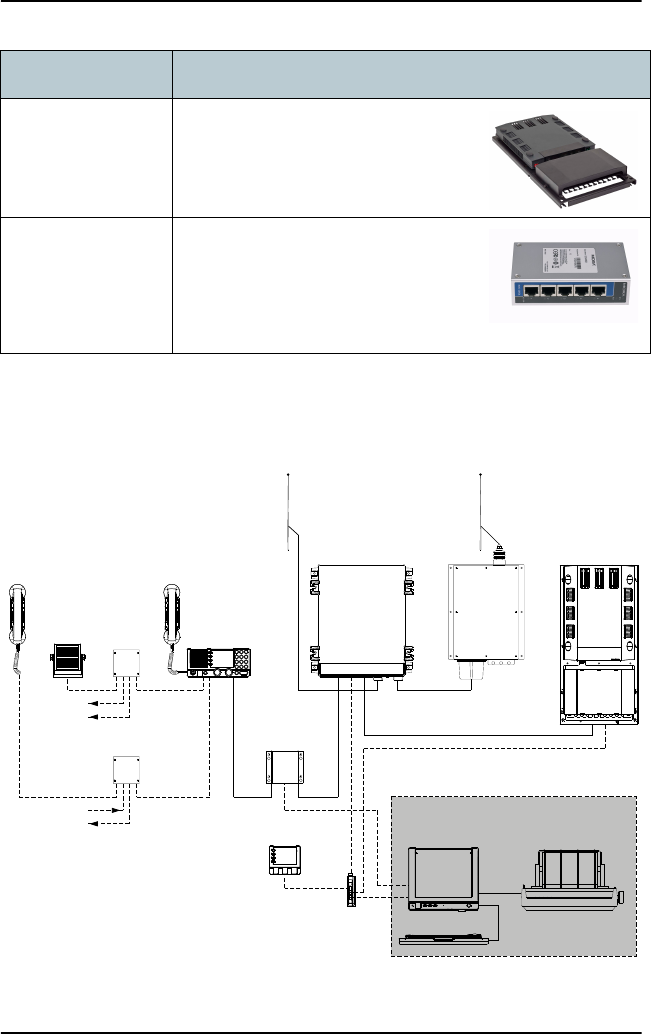
Chapter 1: Introduction
6 Accessories available
System configuration - example
SAILOR 6081 Power
Supply Unit and
Charger
The SAILOR 6081 Power Supply Unit
and Charger provides DC power and
charges automatically a connected
battery.
SAILOR 6197
Ethernet Switch
The SAILOR 6197 Ethernet Switch is
used in installations with SAILOR 6103
GMDSS Alarm Panels and in
installations with ThraneLINK. The
Ethernet switch has 5 ports.
Accessory Description
SAILOR 6209
Accessory
Connection Box
SAILOR 6209
Accessory
Connection Box
Unit
Antenna Tuning
MF/HF
Handset
SAILOR 638x
Message Terminal
DSC Watch receiver
250W MF/HF with 6 ch. Scanning
SAILOR 636x
MF/HF DSC Telex Aerial
(Optional)
Keyboard
MF/HF Control Unit
SAILOR 630x
Alarm Panel
SAILOR 6103
Box
Switch
Handset
GPS option
2182 select option
SAILOR 6270
Power Supply
SAILOR 608x
Connection Box
Control Unit
Distress Alarm
Other Alarm
AILOR 6201
Transceiver Unit
SAILOR 6201
SAILOR 6208
SAILOR 6001
SAILOR 6006
(Optional)
9-131805-C
Telex option
Printer
SAILOR H1252B

7
Chapter 2
2222
Operation
Operation 2
Overview
In this chapter you find detailed instructions and guidelines for:
•General use and navigation
•Basic MF/HF radio communication
•Watch function
•DSC calls
•Handling multiple calls — DSC and voice
•Phone book
•Replay function
•Setup
General use and navigation
When the MF/HF radio is powered on for the first time, typically during
installation, the vessel’s MMSI number is entered. Hereafter the MMSI number
is briefly displayed after power up. The MMSI is a unique, 9-digit identifier
assigned to your ship.
Caution! Without a programmed MMSI number the
Distress button will not work!
The message NO DSC (NO MMSI) is shown in the DSC window
if the MMSI has not been programmed during installation.
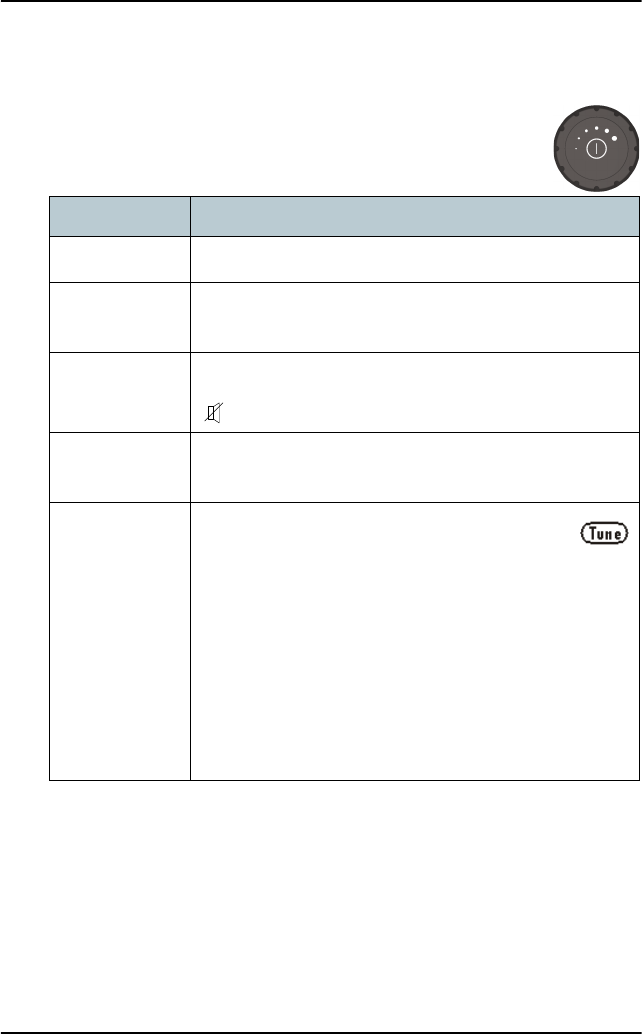
Chapter 2: Operation
8 General use and navigation
Power on, speaker volume and antenna tuning
The MF/HF radio has a dual-function on/off knob for power on/off
and volume control.
Action Procedure
Power on Press the on/off knob.
Power off Press and hold the on/off knob and follow the instructions
in the display.
Speaker volume Turn the volume knob (clockwise = louder,
counterclockwise = softer, until muted). When muted,
is shown in the display.
Volume of the
handset earpiece
To adjust the volume of the handset earpiece see
Controller setup on page 43.
Tuning the
antenna unit
The radio tunes every time you press the PTT
button. As long as the tuning symbol is in the
display, the radio is not transmitting. Wait until the
tuning symbol has disappeared, then press PTT to start
talking. Tuning may take from 0.1 s to 8 s.
Tuning is automatically done
• after selection of a new frequency,
• before any DSC transmission or
• if the timer-defined transmission pause is exceeded.
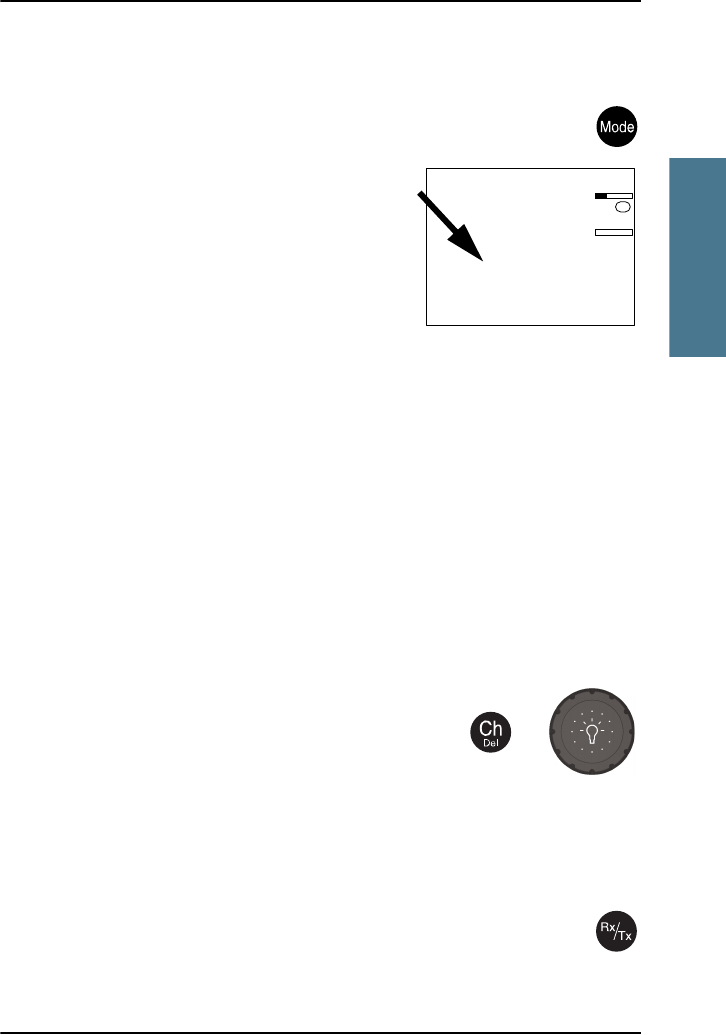
Chapter 2: Operation
General use and navigation 9
2222
Operation
SSB, AM BROADCAST, DSC or TELEX mode
Press the Mode button to select a primary work and emission mode of
the MF/HF radio.
•SSB: In this mode the MF/HF radio listens for
voice on a single RX frequency and transmits
on the corresponding TX frequency.
The mode SSB (EXT.) is available if you want
to use the audio output on the Transceiver
Unit, for example to connect a modem. For
instructions how to enable SSB (EXT.) see
Radio setup on page 38.
•AM: AM broadcast is a listen-only mode for pleasure purposes.
•DSC: The MF/HF radio monitors a single DSC channel to be able to receive
DSC calls.
•TLX-SHIP or TLX-COAST: The MF/HF radio monitors a single TELEX channel
for telex communication using a SAILOR 6006A Message Terminal.
Furthermore the radio may be instructed to go into a specific mode under DSC
subsequent communication or if a frequency is entered which only relates to a
specific mode.
Radio settings and ITU channel selection
To select an ITU channel press the channel button and
•turn the selector knob or
• press the numbers on the keypad.
To browse and select or enter settings use the selector knob.
Entering Rx and Tx frequencies
To enter RX and TX frequencies use the RX/TX button and the keypad.
• First press on RX/TX button: Enter Rx frequency.
CALL
ALERT
DROBOS
MORE
MMSI: 123456789
N 12°34.5678
E 123°45.6789 22:07
GPS
4357.0
4065.0
SSB 401
SQ
kHz/TX
RX
kHz/
+

Chapter 2: Operation
10 General use and navigation
• Second press on RX/TX button: Enter Tx frequency.
For fine tuning of frequencies (voice clarify) press the selector knob.
Adjusting RF gain
Use RF gain to control audibility of the incoming signal. Turn the RF
gain control knob fully:
• clockwise: maximum RF gain — maximum sensitivity
• anti-clockwise: minimum RF gain — minimum sensitivity
The larger the signal strength bar, the larger the signal must be in
order to be audible. After entry of a new receive frequency the RF gain is set to
maximum.
Manual RF gain is used alone or in combination with the AGC (Automatic Gain
Control). The function is enabled in SSB telephony and disabled in all other
modes.
The RF gain is adjusted by the AGC and/or the manual RF gain control. In SSB
telephony mode the AGC can be on (default) or off. In all other modes it is on.
For details how to switch AGC off see Radio setup on page 38.
Fine tuning step sizes
Selector knob SSB mode AM mode
Press 1 x 10 Hz 100 Hz
Press 2x 100Hz 1000Hz
Press 3 x leave fine-tuning leave fine-tuning
kHz/
RX
kHz/
RX
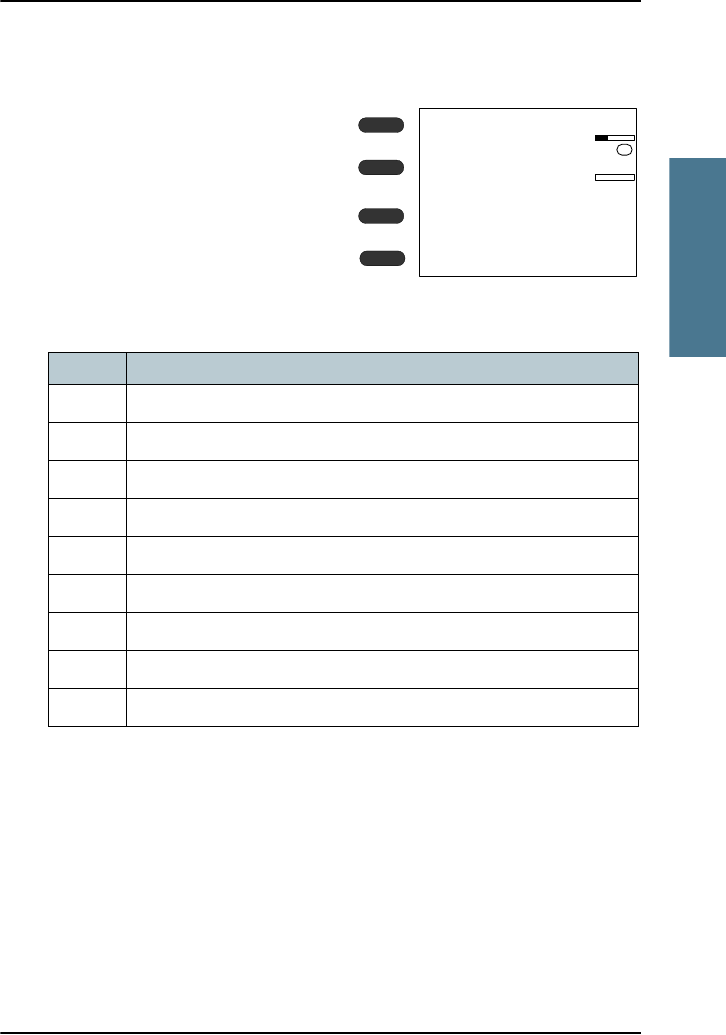
Chapter 2: Operation
General use and navigation 11
2222
Operation
Soft-key functions
A number of functions of the SAILOR
6300 MF/HF DSC are accessed using
the four soft keys to the left of the
display. The current function of a soft
key is shown in the display next to the
soft key.
Use the soft key MORE to display
further soft key functions.
The following soft-key functions are available from top-level standby:
Soft key Function
CALL Make DSC non-Distress calls
ALERT Make a Distress call, categories can be assigned
DROBOS Distress relay call on behalf of someone else
POS Current GPS position, including UTC time and MMSI number
HI/LO Switch between high and low power
PHBOOK Phone book
WATCH Dual watch, current frequencies plus 1 DSC frequency (2177 kHz)
SQLCH Squelch enable or disablea
a. Not available in WATCH mode.
SETUP Setup pages. For more details see Setup on page 37.
CALL
ALERT
DROBOS
MORE
MMSI: 123456789
N 12°34.5678
E 123°45.6789 22:07
GPS
4357.0
4065.0
SSB 401
SQ
kHz/TX
RX
kHz/

Chapter 2: Operation
12 General use and navigation
Position and MMSI Information
The position and MMSI information for the
SAILOR 6300 MF/HF DSC radio is shown in the
lower part of the radio’s display. The current
(latest) position of the connected GPS, the UTC
and position type, GPS Status and MMSI are
displayed.
Entering the vessel’s position manually
If you need to enter the vessel’s position and UTC time manually, do as
follows:
1. Press the soft key POS. If it is not in the display, press the soft key MORE
until POS appears.
2. Turn and press the selector knob to select the value you want to change.
Then use the keypad or press and turn the selector knob to enter the
current position or UTC time. The display shows (Man).
3. Press the soft key OK to save the new value.
After you have entered a value manually or overruled the GPS input, a soft
key UseGPS appears in the POS menu if the GPS is available. Press this soft
key if you decide to use the data from the connected GPS.
4. Press the soft key SAVE.
5. Press the soft key EXIT to return to normal use.
If the GPS was present and then disappears a warning appears in the display
after 10 minutes. Follow the instructions on the screen.
CALL
ALERT
DROBOS
MORE
MMSI: 123456789
N 12°34.5678
E 123°45.6789 22:07
GPS
4357.0
4065.0
SSB 401
SQ
kHz/TX
RX
kHz/

Chapter 2: Operation
General use and navigation 13
2222
Operation
Channel information always available in the display
For some functions and for the setup pages,
the channel and radiotelephony information
has moved to the bottom section of the
display. You can change frequencies whenever
the frequencies are displayed.
If PTT is pressed the radio transmits on the
displayed frequency on which the radio is
tuned into for communication. If a signal is
received, it is received on the displayed
frequency.
Engagement status
The radio is engaged when an active DSC-initiated communication is ongoing,
or communication is active on non-DSC initiated MF/HF operation:
• A new channel is selected
• PTT is pressed or,
• Voice signal is received (if squelch is enabled)
The engagement state is used to prohibit incoming DSC calls from taking over
control of the transmitter channel, disrupting ongoing communication.
When the radio is engaged in communication not initiated by DSC, this is
indicated with the symbol in the display. Engagement will automatically
time-out on inactivity, after an inactivity time specified in DSC setup on
page 40.
To terminate the engagement immediately press the soft key QUIT.
EXIT RADIO SETUP
SSB 294
DUP
Scan Hang Time: OFF
1794.0 Rx
2138.0 Tx
EXT. SSB Mode: OFF
(Example: Radio setup)

Chapter 2: Operation
14 General use and navigation
Speaker devices
The MF/HF radio can be equipped with the following speaker devices:
• Additional SAILOR 6301 Control Unit
• SAILOR 6201 Handset with cradle, microphone, ear piece and PTT (Push To
Talk) button.
• SAILOR 6202 Handmicrophone with PTT button.
See Controller setup on page 43 for managing the connected speaker devices.
Changing the display colors and dim function
Red text on black background is available for optimal night vision. To dim the
display backlight, e.g. to give comfortable night vision, press, hold and turn
the selector knob anti-clockwise. The display shows a brightness bar. At the
brightness value 45 the display changes to night view with red text on black
background.
To return to day vision press, hold and turn the
selector knob clockwise until the display
changes and it reaches the desired brightness.
The radio has two color themes: Black text on a
white background (default) or white text on
black background. To change the color theme
see System setup on page 42.
Squelch on/off (soft key)
Press the soft key SQLCH to toggle between squelch on and off. If it is not in
the display, press the soft key MORE until SQLCH appears. SQ is shown in the
display.
The Squelch control is based on voice detection. When squelch is enabled, the
receiver is muted in speech pauses. Squelch is automatically activated in
WATCH mode.
For impact of squelch on replay see Replay function on page 36.
CALL
ALERT
DROBOS
MORE
MMSI: 123456789
LAT: N 12°34.5678
LON: E 123°45.6789 (GPS)
22:07
1794.0
2138.0
SSB 294
RX
TX
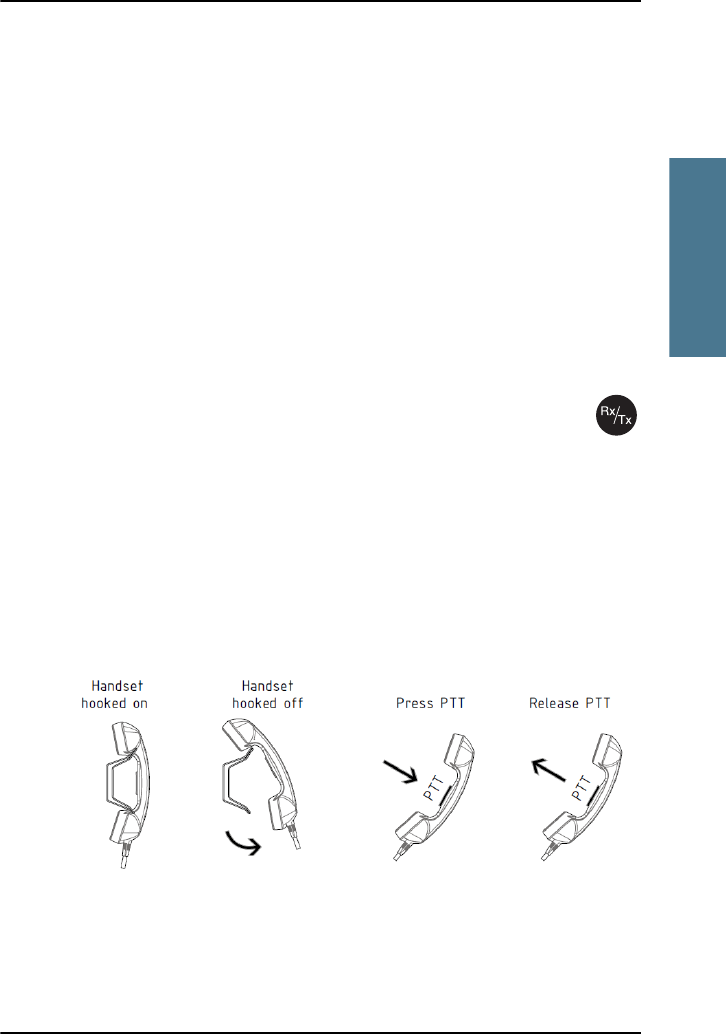
Chapter 2: Operation
Basic MF/HF radio communication 15
2222
Operation
Basic MF/HF radio communication
You can make radio calls using the Handset or another speaker device.
• Ship-to-ship communication: Use simplex channels.
• Ship-to-shore communication: Use duplex channels.
Only valid frequencies and channel numbers are accepted.
Quick guide to radio telephone calls
1. Check that the MF/HF radio is in SSB mode. If necessary, press the button
MODE to switch to SSB.
2. Enter an RX and TX frequency, for example 2182 kHz, the
international calling and Distress frequency for maritime
radiotelephone communications on the marine MF bands.
• First press on RX/TX button: Enter Rx frequency.
• Second press on RX/TX button: Enter Tx frequency.
• Long press on selector knob: Edit mode to fine-tune frequencies. In
SSB mode (Voice clarify), in 10 Hz steps. One more press changes the
step size to 100 Hz.
3. Take the handset off the hook and press the PTT button on the speaker
device. Now the antenna is tuned and a tuning symbol is displayed.
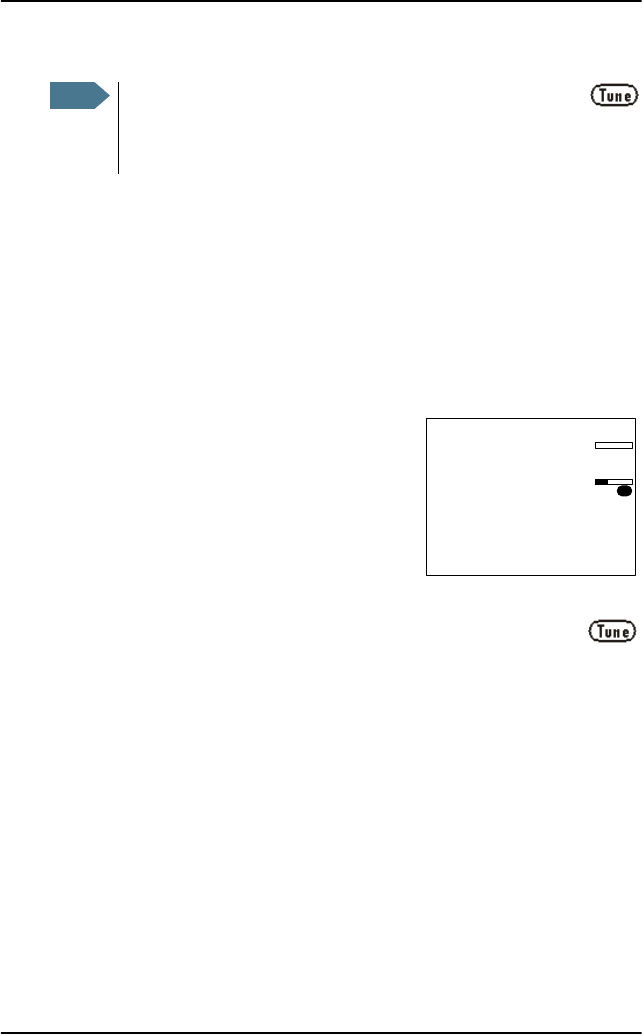
Chapter 2: Operation
16 Basic MF/HF radio communication
4. When the TX indicator lights up and the transmission power bar shows
activity, the transmission is active. Always say “Over.” before releasing the
PTT button.
5. To receive a radio signal, release the PTT button. When receiving a signal,
the bar for received signal strength shows activity.
Receiving a radio telephone call
When you hear your ship’s name or call sign in
the loudspeaker, the symbol RX shows that the
radio is receiving on the frequencies displayed
and the bar for received signal strength shows
activity. Proceed as follows:
1. Lift the Handset or take another speaker
device.
2. Press the PTT button and wait until the tune icon has
disappeared. The symbol TX shows that the radio is transmitting
on the frequencies displayed and the transmission power bar shows
activity.
3. Repeat the name of the station calling you and say: “This is [your ship’s
name]”.
4. Suggest a frequency pair by saying: “Frequencies [suggested frequencies]”
and “Over.” and release the PTT button to allow the caller to confirm the
suggested new frequencies.
5. Switch to the new frequencies using the RX/TX button and the keypad and
begin your conversation. Press PTT only when you are talking.
Note
The radio tunes every time you press the PTT button. As
long as the tuning symbol is in the display, the radio is not
transmitting. Wait until the tuning symbol has disappeared, then
press PTT to start talking. Tuning may take from 0.1 s to 8 s.
CALL
ALERT
DROBOS
MORE
MMSI: 123456789
N 12°34.5678
E 123°45.6789 22:07
GPS
4357.0
4065.0
SSB 401
SQ
kHz/
TX
kHz/RX

Chapter 2: Operation
Watch function 17
2222
Operation
Making a radio telephone call
1. Enter RX and TX frequencies or select an
ITU channel.
2. Lift the Handset or take a speaker device
and press the PTT button, then wait until
the tune icon has disappeared. The symbol
TX shows that the radio is transmitting on
the frequencies displayed. The transmission
power bar shows activity,
3. Say the name of the station you are calling three times.
4. Say: “This is [your ship’s name]” and “Over.” and release the PTT button to
listen. The symbol RX shows that the radio is receiving on the working
channel displayed.
5. When answered, agree upon a pair of frequencies, enter the new
frequencies or ITU channel and start talking.
Watch function
The MF/HF radio radio has a dual watch function. The currently selected RX
and TX frequencies and the Distress frequency 2182 kHz are watched.
To start WATCH press the soft key WATCH. The display shows SSB-DUAL, the
tab for an active voice session and SQ.
To stop WATCH press the soft key WATCH or PTT on the speaking device.
CALL
ALERT
DROBOS
MORE
MMSI: 123456789
N 12°34.5678
E 123°45.6789 22:07
GPS
4357.0
4065.0
SSB 401
SQ
kHz/TX
RX
kHz/
Note
If a popup window with the information TX inhibit is displayed
when you want to make a radio call, your MF/HF radio is
temporarily blocked for sending. Consult your radio responsible
for information when you can start transmitting.

Chapter 2: Operation
18 DSC calls
DSC calls
In this section of the manual you find information on:
•Own Distress — sending, acknowledging and cancelling
•DROBOS — Distress relay on behalf of someone else
•Receiving Distress calls
•DSC calls
•Sessions in the MF/HF radio
•Handling multiple calls — DSC and voice
•Geographical area calls
Own Distress — sending, acknowledging and cancelling
To send a Distress alert
1. Lift the cover of the red Distress button and press and hold the
Distress button for longer than 3 seconds. For short step-by-step
instructions how to proceed when sending a Distress message
see Emergency calls on page vi.
When the Distress signal is sent, SSB, and
Tx appear in the display. A two-seconds
beep tone is heard and the channel that is
currently sent appears in the display.
The MF/HF radio displays one by one the
bands in which the Distress has been
transmitted.
If you inadvertently transmit a DSC
Distress alert press the soft key ANNUL. For detailed instructions how to
cancel all Distress alerts see To cancel own Distress on page 20.
2. Press the soft key FREQ if you want to specify a certain band out of the 6
available as the next distress frequency. Thereafter all 6 distress
frequencies are transmitted.
ANNUL
FREQ
MORE
PAUSE
WAIT FOR ACK: 0:01:50
REPEAT IN: 1:30
D. MMSI:223344556
NAT: UNDESIGNATED
Bands: 2 4 6 8 12 16
2182.0 Rx
2182.0 Tx
SSB DIST
OWN DISTRESS

Chapter 2: Operation
DSC calls 19
2222
Operation
3. Press the soft key VIEW (press MORE to advance to VIEW) to see details
and start radio communication on the frequency 2182 kHz (automatically
set) to inform about your Distress situation.
For an undesignated Distress message the subsequent communication is
always voice communication.
ALERT — To send a Distress alert with specified parameters
To send a Distress call with specified
nature, distress frequency and sub
communication mode Telex do as
follows:
1. Press the soft key ALERT.
2. Enter the necessary information
using the selector knob:
Note
Automatic retransmission: If no Distress acknowledgement is
received within a period of 3.5 to 4.5 minutes, the Distress message
will automatically be retransmitted. Transmitting order: 2 MHz, 8
MHz, 4 MHz, 6 MHz, 12 MHz, 16 MHz.
Item Description
Distress nature FIRE, EXPLOSION
FLOODING
COLLISION
GROUNDING
LISTING (in danger of capsizing)
SINKING
DISABLED (and adrift)
UNDESIGNATED
ABANDONING (ship)
PIRACY (armed robbery attack)
MAN OVERBOARD
DSC All or single frequency, if you only want to send the
Distress alert on one of the 6 Distress frequencies.
Mode Radio sub communication mode: SSB or Telex FEC.
EXIT
POS
DSC: ALL
LAT: N 23° 23.3234
LON: W 123° 23.3234
POS: UTC: 12.34
PUSH DISTRESS
2182.0 Rx
2182.0 Tx
SSB DIST
DISTRESS CALL
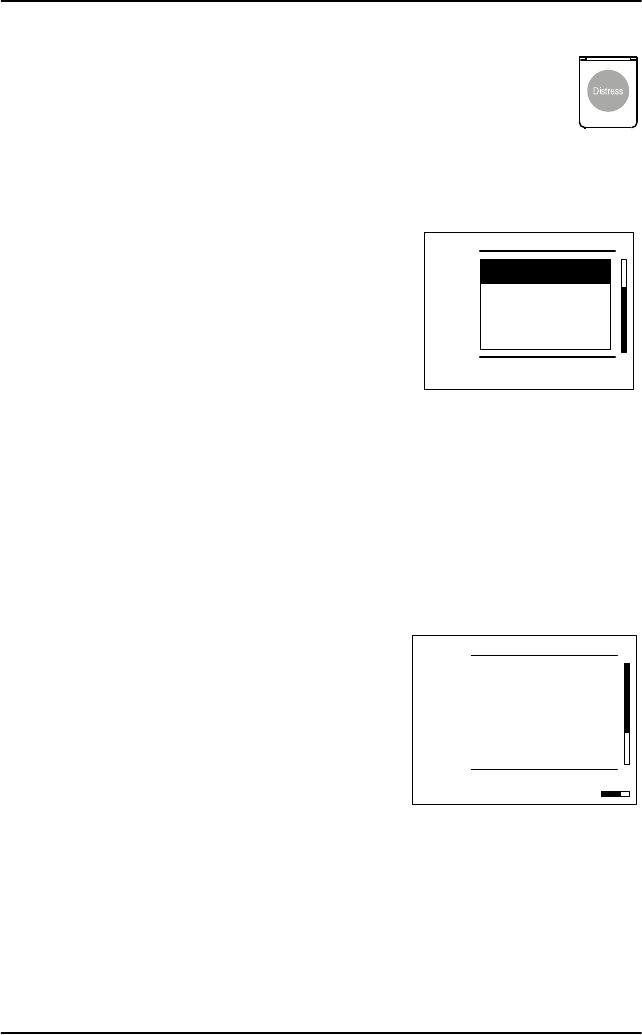
Chapter 2: Operation
20 DSC calls
3. Lift the cover of the red Distress button and push the Distress
button for 3 seconds.
To receive acknowledgement of own Distress
When the MF/HF radio receives an
acknowledgement of Distress from another
vessel or station, a 2-tone alarm sounds. The
display shows a pop-up window with the MMSI
number of the station who sent the Distress
acknowledgement call.
•Press SILENT or any other key to switch off
the 2-tone alarm.
•Press the soft key VIEW to display further data for this call.
•Press VIEW again to return to the working display.
If the same own Distress acknowledgement comes in more than once, the 2-
tone alarm sounds briefly and terminates automatically.
To cancel own Distress
If you inadvertently transmit a DSC Distress
alert and want to cancel it do as follows:
1. The display shows that a Distress message
has been sent. Press the soft key ANNUL.
A pop-up window is displayed.
SILENT
DSC: ALL
LAT: N 23° 23.3234
LON: W 123° 23.3234
POS: UTC: 12.34
PUSH DISTRESS
Bands: 2 4 6 8 12 16
ACK RECEIVED:
OWN DISTRESS
DISTRESS ACK
FROM: 219005678
CAT: DISTRESS
Call Received
ANNUL
FREQ
MORE
PAUSE
WAIT FOR ACK: 0:01:50
REPEAT IN: 1:30
D. MMSI:223344556
NAT: UNDESIGNATED
Bands: 2 4 6 8 12 16
2182.0 Rx
2182.0 Tx
SSB DIST
OWN DISTRESS

Chapter 2: Operation
DSC calls 21
2222
Operation
2. Press the soft key YES to go ahead with
the cancelling process, or press the soft
key NO to return to Distress sending
procedure.
3. You must send a voice cancellation
message on all DSC watch channels. The
display shows the message that you
should say when cancelling the Distress.
Use the selector knob to scroll through all information for the voice cancel.
4. Press the soft key OK to go to the next Distress frequency and repeat step 3.
Once you have made the voice cancel for all Distress frequencies, Own
Distress is cancelled.
5. To finish the Distress session and get back to normal radio use press the
soft key QUIT.
Power failure while in Distress
In case of a power failure or switch-off during the transmission of a Distress
the SAILOR 6300 MF/HF DSC gives an audible warning after power-up and
automatically resumes sending Distress 10 seconds after power up. Within the
10 seconds you have the following options:
•Press QUIT to terminate the active Distress procedure (acknowledged or
unacknowledged).
•Press RESUME (or do nothing) to resume the sending Distress procedure.
Sending a Distress from the SAILOR 6103 Alarm Panel
The optional SAILOR 6103 Multi Alarm Panel will, when
connected to the MF/HF radio, indicate in the SAILOR 6103
display that a Distress can be sent over MF/HF.
YES
DSC: ALL
LAT: N 23° 23.3234
LON: W 123° 23.3234
POS: UTC: 12.34
PUSH DISTRESS
OWN DISTRESS
CANCEL DISTRESS Will
Send DSC Cancel And
Voice Cancel On The
Following Bands:
2 4 6 8 12 16
DSC WARNING
NO
Note
Only undesignated Distress messages can be initiated from the
Alarm Panel.

Chapter 2: Operation
22 DSC calls
To send a Distress alert from the SAILOR 6103 Multi Alarm Panel, do as
follows:
1. Lift the cover of the Distress button marked MF/HF Distress.
2. Press and hold the button until the light is steady and the buzzer stops
(more than 3 seconds).
The MF/HF radio is now in Distress mode. Continue the Distress traffic and
procedures from the MF/HF radio front panel.
3. Press the MUTE button on the Alarm panel to mute the audible alarm for
current distress. All audible alarms are muted.
For further information see the Alarm Panel Installation and user manual.
DROBOS — Distress relay on behalf of someone else
To send a Distress message on behalf of someone else, do as follows:
1. From top-level standby press the soft key
DROBOS.
2. Select one line at a time by pressing and
turning the selector knob.
3. Enter the necessary information using the
selector knob or the keypad:
DROBOS items Description
TYPE: Select RELAY INDIV or RELAY AREA.
Distress MMSI: Enter the MMSI number of the vessel in Distress, if
known, or else “unknown”
TO: Enter the MMSI number of the coast station you are
relaying the Distress alert to.
EXIT DISTRESS RELAY
PHBOOK
SSB 601
DUP 6501.0 Rx
6200.0 Tx
TYPE: RELAY INDIV.
DISTRESS MMSI:
234567891
TO:
DSC: 8414.5/8414.5
Mode: SSB

Chapter 2: Operation
DSC calls 23
2222
Operation
4. Press the soft key SEND.
Receiving Distress calls
When the radio receives a Distress call, the 2-tone alarm sounds. The display
shows the bands in which the Distress call is received and the category of the
Distress call. The types of Distress calls are Distress, Distress ACK, Distress
RELAY and DISTR. RELAY ACK.
1. Press the soft key SILENT or any other key to switch off the 2-tone alarm.
2. Press VIEW to display further information for this call.
3. Press HOLD to put the call on hold and stay in the communication loop to
receive follow up information, updates etc.
4. Monitor radio communication on the frequency 2182 kHz (automatically
set) as a coast station may require your assistance.
5. The radio receives the first Distress acknowledgement call and the 2-tone
alarm sounds again. To switch off the 2-tone alarm press the soft key
SILENT. A press on any key also switches off the 2-tone alarm.any key.
DSC: Enter the DSC frequency pair, 6 are available, default:
2182 kHz.
Mode: Select the radio sub communication mode: SSB or Telex
FEC.
NAT: Select the nature of Distress, see ALERT — To send a
Distress alert with specified parameters on page 19.
Enter also the position data, LAT, LON and POS UTC.
LAT:
LON:
POS UTC:
Enter the position data.
DROBOS items Description

Chapter 2: Operation
24 DSC calls
6. If you decide to acknowledge the Distress call press the soft key ACK (press
MORE until ACK is shown in the display).
You can also relay the Distress call. Enter a new MMSI to which you want to
send the Distress call, then press the soft key SEND.
Distress call with errors
Distress calls containing errors can be received. Press
the soft key VIEW to view the message; errors are
shown as underscores (_).
Distress call log
As long as you are part of a Distress session, i.e. you have not pressed QUIT,
you receive Distress messages and can track all Distress messages for the
current Distress event.
1. Press the soft key LOG. If it is not in the display, press the soft key MORE
until LOG appears.
2. Press the soft key NEXT and PREV to browse the received Distress
messages.
3. Press the soft key EXIT to leave the log.
DSC Call Received
GROUP (ERR)
FROM: 123456789
CAT: DISTRESS
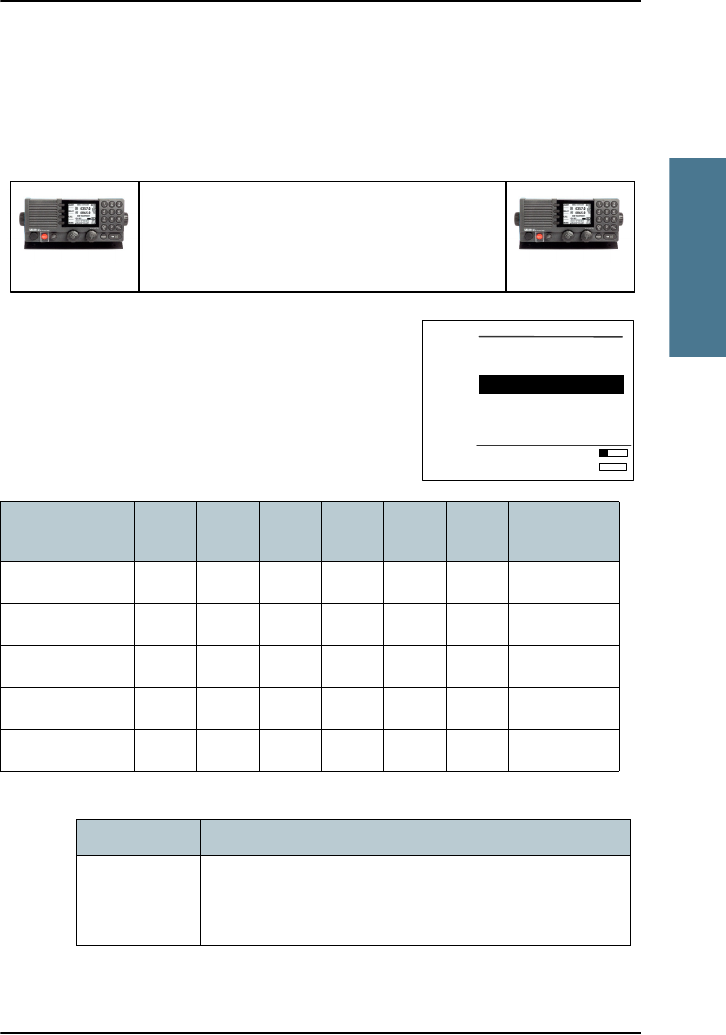
Chapter 2: Operation
DSC calls 25
2222
Operation
DSC calls
With a DSC call you can establish a radio communication with one or several
specific radios on a suggested pair of frequencies or channel.
To make a DSC call, do as follows:
1. Press the soft key CALL. The default call is
an individual routine call.
2. Turn and press the selector knob to select a
call type. For each DSC call type a number
of parameters can be set.
3. Make the entries for the desired call type:
MF/HF Radio BMF/HF Radio A
1. Make a DSC call from Radio A to Radio B.
2. DSC acknowledge from Radio B to Radio A.
3. Radio A + B go on the agreed MF/HF channel.
4. Press PTT and start talking .
EXIT DSC CALL
To:
Type: INDIVIDUAL
Cat: ROUTINE
DSC: 2177.0/2177.0
PHBOOK
1794.0 Rx
2138.0 Tx
SSB 294
DUP
Ch: 2265.0/2265.0
Mode: SSB
DSC call type Cat To: DSC: Mode CMD Ch DEST CENTRE
+ RADIUS
INDIVID. XXXX—X —
SATETY TEST — X X — — — —
Position — X X — — — —
Group —XXX—X —
Area X — X X X — X
Item Description
TO: Enter the 9-digit MMSI number of the vessel you want to
contact or use the phone book (PHBOOK) to select a
contact.

Chapter 2: Operation
26 DSC calls
4. Press the soft key SEND to make the call.
Sessions in the MF/HF radio
What is a session?
A DSC session is defined as a collection of DSC calls (transmitted and/or
received) that are related to the same event (e.g. a Distress event) or
established call (e.g. an individual call request followed by an
acknowledgement).
A session can be either active or on hold. The active session has control over
the radio transmitter. A session can have a purpose. For example if the
purpose is to establish a communication on a working channel.
The non-DSC communication (voice) is considered as a session that can be
active (engaged) or on hold (dis-engaged). See also Engagement status on
page 13.
DSC: Enter a frequency for the DSC call.
Mode: Select the sub communication mode SSB or TELEX FEC.
Cat: Select a DSC call category, depending on the call type
(Routine R, Safety S or Urgency U)
CMD: Select Medical transport or Neutral crafts (if enabled in
DSC setup on page 40). Only for the category: Urgency
calls.
Ch: Enter the suggested frequencies for voice
communication.
DEST CENTRE +
RADIUS
For Area calls enter the destination centre with latitude
and longitude data, plus the destination radius in nm.
For information about how areas must be entered see
Geographical area calls on page 33.
Item Description
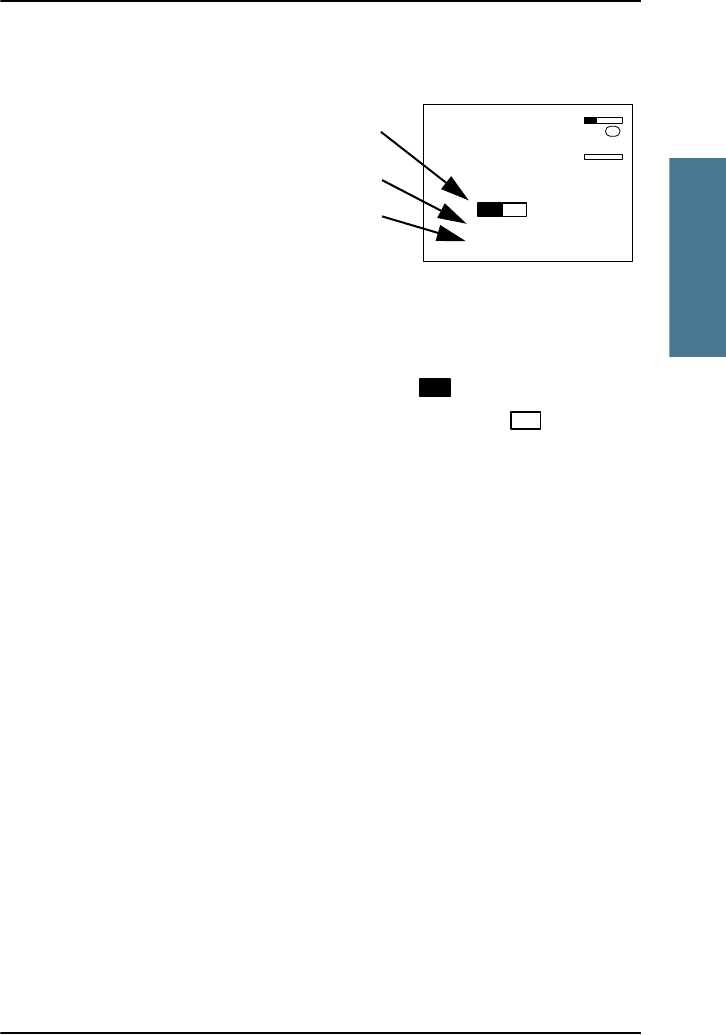
Chapter 2: Operation
DSC calls 27
2222
Operation
Display for a session
In the lower part of the
display the type of
session, the current
state, MMSI number of
the other party and
lapsed time since the
reception of a call
request or an
acknowledgment is shown.
The session state icons, in the example V and R, show the state of the session:
•ACTIVE — the session icon is inverted, the transmitter tuned into the
communication channel (in the example , a DSC Routine call).
•HOLD — normal view, parked session (in the example , MF/HF
voice communication.
•FLASHING — Call has updates that need handling or viewing
For more information on the session state icons see Session state icons D, U,
S, R, V and T below.
Session state icons D, U, S, R, V and T
Session icons in the session view inform you of the severity or category of the
DSC call or Voice communication:
•D — Distress category
•U — Urgency
•S — Safety
•R — Routine
•V — Voice (voice call, non-DSC)
•T — Telex
QUIT
HOLD
VIEW
MORE COMM WITH 123456789
GROUP RX
0:12
RV
4357.0
4065.0
SSB 401
kHz/TX
RX
kHz/
Session state icons
Session line
Session status
R
V

Chapter 2: Operation
28 DSC calls
Session line
The following table gives an overview of the information in the session line:
Session status
The following table gives an overview of the information in the session status:
Session line Explanation
OWN Distress The ship is in own Distress. See also To send a
Distress alert on page 18.
Distress RX You watch or participate in a Distress
communication for another station in Distress
RELAY calls
(numerous)
You watch or participate in a Distress
communication for another station in Distress
ALL SHIPS TX/RX You have sent / received an all ships call
GROUP TX/RX You have sent / received a group call
INDIVIDUAL TX/RX You have either sent a call request to a station to
establish contact, or another station has made a
call to you to establish contact. The call needs a
reply.
TEST TX/RX You either have sent a SAFETY TEST call or have
received a SAFETY TEST call from another station
that needs to be replied.
POSITION TX/RX A position request was either sent or received.
Session status Explanation
WAIT FOR
ACKNOWLEDGE
You made an individual call to a station and are
awaiting a reply to establish connection.

Chapter 2: Operation
DSC calls 29
2222
Operation
Soft keys for DSC sessions
Call/session types vary in control options, and options may also change if a
session changes its state. The following table gives an overview of the DSC soft
key commands available:
OCCUPIED The DSC transmission mechanism waits until the
selected DSC channel is free.
TRANSMITTING Transmission of a DSC message is ongoing.
IN COMMUNICATION
WITH
The communication has been established
Session status Explanation
Soft key — DSC session Radio function
QUIT Terminates the DSC session
HOLD Puts the DSC session on hold if it is active (return to
other non-DSC functions)
ACTIVE Activates the DSC session
VIEW Shows details about the DSC call
RESEND Transmits an identical call if available
NEWCH Replies with a new channel if an individual call is
received with a communication channel specified
which is not available in the radio, or the operator
decides to change the channel.
UNABLE Constructs a reply to the caller if an individual call is
received which is not compatible with the radio
modes.
SILENT Silences alarms. Any key silences the alarm but this
soft key function will do only this.

Chapter 2: Operation
30 DSC calls
You find detailed information how to handle multiple calls in Handling
multiple calls — DSC and voice on page 32.
Information for DSC sessions (soft key: VIEW)
A DSC session is updated based on DSC calls received or transmitted. Press the
soft key VIEW to show the details for the current session. For Distress events a
ACK Acknowledges a received call request with the
suggested parameters.
POS (Own Distress) A shortcut to own position data information.
PAUSE (Own Distress) Pauses the automatic repetition of Distress
transmissions
RESUME (Own
Distress)
Resumes automatic repetition of Distress
transmissions (if paused)
DIST ACK Distress acknowledgement.
RELAY Relay a received Distress call.
ANNUL (Cancel Own
Distress)
Cancels an inadvertently transmitted Distress
CONFIRM (Cancel Own
Distress)
Confirms action and proceed sequence, used in
cancel Distress procedure
INFO (in Cancel Own
Distress)
Turns page of text message.
HIST (Received
Distress)
A filtered version of the log displaying received calls
relevant to the current Distress event.
Soft key — DSC session Radio function

Chapter 2: Operation
DSC calls 31
2222
Operation
sequence of calls may contribute to the complete view and status of the
session. Detailed fields for Distress are:
For other session types the soft key VIEW typically shows the details from a
single call. Detail fields for other calls than Distress are:
Details — Distress Explanation
DISTR-MMSI The vessel in Distress
NAT Nature of Distress
LAT Latitude position of station in Distress
LON Longitude position of station in Distress
POS UTC Time of position
MODE Communication mode (SSB, Telex)
2 4 6 8 12 16 Frequency bands for Distress alerts
Details —other calls Explanation
CALL Type (on received call) – The call type may be shown on
call reception
CAT Category of the call: Urgency, Safety or Routine
FROM The initiator of the call
TO The intended receiver of the call (unless All Ships)
MODE Communication mode (Simplex/Semi-duplex
Telephony supported)
CHANNEL Subsequent communication channel
LAT Latitude position returned upon a position request
LON Longitude position of station in Distress
POS UTC Time of position
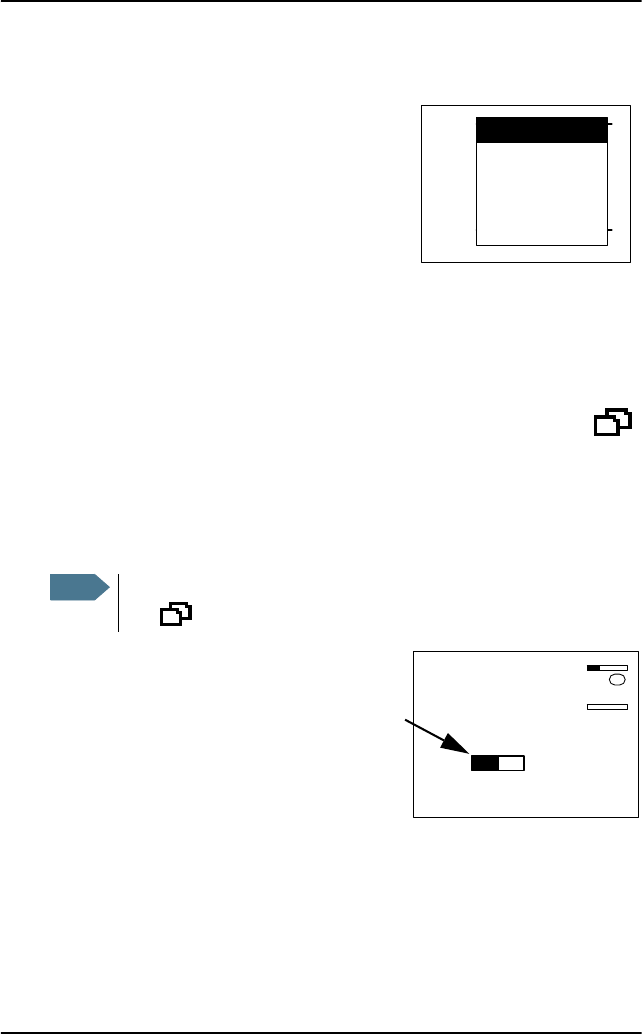
Chapter 2: Operation
32 DSC calls
Receiving DSC calls
If the radio is in stand-by mode, i.e. not
engaged in another session, and a DSC call is
received the call details are shown on the
display.
Press the soft key SILENT or any other key to
continue.
You can acknowledge the call, put it on hold
or display more information (soft key: VIEW). If you put the call on hold, the
session icon for this call will flash until you have acknowledged the call. See
also Display for a session on page 27.
Handling multiple calls — DSC and voice
The SAILOR 6300 MF/HF DSC can control multiple DSC sessions
simultaneously with a voice communication session. All sessions can keep
track of their session state and the communication channel used. They are
handled in their respective sessions, in the order as they are started up.
A call — or session — can be on hold (HOLD)
or active (ACTIVE). If there are several calls
ongoing, they are shown as tabs in the
display with their state (active, on hold,
requiring attention). The DSC sessions on
hold can receive calls that are pertinent to
the session, even when the session is not
displayed.
To close a session, the session must be active, then press the soft key QUIT.
In case there are simultaneous alarms, they are sorted according to their
priorities, the most important ones are shown first. In some cases alarm or
pop-up messages terminate automatically, then the display messages and
audible alarms also disappear automatically.
SILENT
DSC: ALL
LAT: N 23° 23.3234
LON: W 123° 23.3234
POS: UTC: 12.34
PUSH DISTRESS
INDIVIDUAL CALL
FROM: 987654321
CAT: Routine
RECEIVED: 01:32
DSC: 4357.0/4065.0
CALL RECEIVED
Note
Note that there is one active call or session at a time. Use the soft
key to switch between the ongoing calls/sessions.
QUIT
HOLD
VIEW
MORE COMM WITH 123456789
GROUP RX
0:12
RV
4357.0
4065.0
SSB 401
kHz/TX
RX
kHz/

Chapter 2: Operation
DSC calls 33
2222
Operation
Geographical area calls
When making a DSC area call, you must
enter the position of the ship (x,y) and the
radius of interest r. This information is
transformed to a square with a corner
point (a,b) and the length of its sides, a
and b. Then the DSC message is
transmitted. The illustration on this page
shows the relation between the user
input — the white circle — and the
information transmitted —the grey
square. The center point is the position of
the ship measured in degrees and minutes, whereas the radius of interest is in
nautical miles.
The corner point of the square (a2,b2) and the length of its sides is given in
degrees. Note that these values are rounded to degrees, and due to the
requirement that the square shall include the entire circle; this will result in a
slightly larger area than defined by the user input.
Attention when close to the poles: If the latitude of the corner point ‘a’ is
transformed to a value greater that 90° then it is set to 90° and the length b
is reduced correspondingly. If the length a is greater than 90° then a is set
to 90°.
(x,y)
r
a
2
,b
2
b
2
a
2
a
1
b
1
b
a

Chapter 2: Operation
34 Phone book
Phone book
Use the phone book when making a DSC call. You can enter up to 50 contacts.
The phone book is always sorted alphabetically by contact names. To sort
phone book contacts use the soft key FILTER. The contacts can be sorted in
ALL, COAST, SHIP or GROUP.
Using the phone book to make a DSC call
To call a contact using the phone book do as follows:
1. Press the soft key CALL. If it is not in the display, press the soft key MORE
until CALL appears. The DSC call composer is shown in the display.
2. Press the soft key PHBOOK.
3. Turn the selector knob to scroll to the phone book entry that you want to
call and press the selector knob to select the contact.
4. Press the soft key SEND to make the call.
Adding a contact to the phone book
To add a contact to the phone book do as follows:
1. Press the soft key PHBOOK. If it is not in the display, press the soft key
MORE until PHBOOK appears in the display.
2. Press the soft key ADD and fill in the details for the new contact.
Contact Description
NAME Enter the name by turning the selector knob to the
desired letter, press the selector knob to accept the letter
and advance to the next letter. To finish press the soft key
OK.
TYPE Press and turn the selector knob to select SHIP, GROUP
or COAST STATION.

Chapter 2: Operation
Phone book 35
2222
Operation
3. Press the soft key SAVE to save the contact information.
4. Press the soft key EXIT to leave the phone book.
Editing a contact
1. Press the soft key PHBOOK. If it is not in the display, press the soft key
MORE until PHBOOK appears.
2. Press the soft key EDIT.
3. Press and turn the selector knob to browse through the details of the
contact and continue as described in Adding a contact to the phone book
from step 2 onwards.
MMSI Turn and press the selector knob to enter the contact’s
MMSI number (9 digits), press the soft key OK to accept.
For coast station contacts you can also enter a DSC
channel.
Ch (optional) Press and turn the selector knob to select the preferred
channel for this contact, press the soft key OK.
Position Auto
Ack
For SHIP or COAST STATION: Press and turn the selector
knob to select YES or NO for this contact, press the soft
key OK. This will allow auto-ack of position requests for
this contact.
Listen to
Group
For GROUP: Press and turn the selector knob to select
YES or NO for this contact, press the soft key OK. The
radio will respond to calls to the specified group.
Contact Description

Chapter 2: Operation
36 Radiotelex
Deleting a contact
1. Press the soft key PHBOOK. If it is not in the display, press the soft key
MORE until PHBOOK appears.
2. Turn the selector knob to browse to the contact you want to delete.
3. Press the soft key MORE until DELETE appears.
4. Press the soft key DELETE.
5. Press EXIT to leave the phone book and return to radio operation.
Radiotelex
With the Radiotelex system you can send and receive telex messages over
MF/HF radio. The Radiotelex program runs on a SAILOR 6006 Message
Terminal with a keyboard. The SAILOR 6006 is connected to a System 6000
MF/HF radio, which transmits and receives the radio telex messages.
In order to send and receive telex messages press the mode button of
the MF/HF radio until TLX-SHIP or TLX-COAST is shown in the display.
For detailed instructions how to send a radio telex message see the
SAILOR 6300 MF/HF Radiotelex, User Manual.
Replay function
With replay you can playback received voice messages in the loudspeaker.
Recording is activated automatically when a signal is received. Recording is
not possible during playback. Up to 60 tracks or 240 seconds can be handled.
Note
To record messages only (without the continuous background noise)
activate the squelch function. Press the soft key SQLCH.

Chapter 2: Operation
Setup 37
2222
Operation
The recorded channel is displayed and the message length is shown in
seconds. The display shows also how old the message is. If the 240 s storage
limit is reached, the oldest data is overwritten.
Replaying recorded messages
Press the replay button to replay a recorded message. The latest message is
repeated. Information about this message is shown in the display. If a signal is
received while in replay mode the display shows in the display.
To stop replaying the message press the soft key STOP or the PTT button on
the speaking device. To rewind through one recorded message make a long
press on the Replay button. To leaf through all recorded messages press the
replay button repeatedly at short intervals.
Setup
The following setup pages are described in this section of the manual:
•Radio setup
•Channel setup
•Power Supply
•DSC setup
•DSC call logs
•System setup
•Controller setup
Note
The replay function can be started even in a Distress situation. If a
DSC call is received the replay function continues the playback.
Immediate acknowledgement of the DSC call initiates and activates
the DSC session. You can start replay from any session afterwards.

Chapter 2: Operation
38 Setup
Accessing a setup page
To change a setting in one of the SETUP pages, do as follows
1. Press the soft key SETUP. If it is not in the display, press the soft key MORE
until SETUP appears.
2. Press the arrow soft key or to advance to the SETUP page you want
to edit.
3. Turn the selector knob to go to a setting, then press the selector knob to
change the setting.
4. Press EXIT to return to normal radio operation.
Radio setup
Item Description
Scan
Hang
Time
Scan hang time, in seconds on an active receiving working channel.
The time is measured from the signal is detected. The radio remains on
the channel for the set time interval, if a signal was detected.
OFF: Resumes scanning when signal disappears (default)
4, 6, 8, 10: Hang time in seconds.
EXT. SSB
Mode
•OFF (default).
•ON
Use the mode SSB (EXT.) if you want to use the audio output on the
Transceiver Unit, for example to connect a modem.
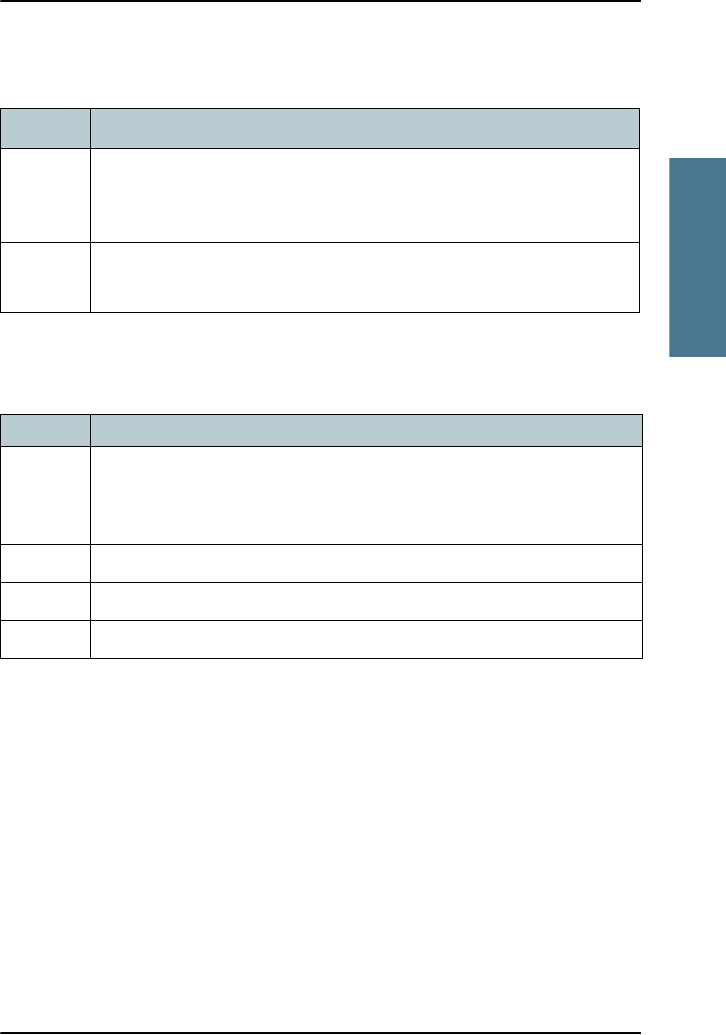
Chapter 2: Operation
Setup 39
2222
Operation
Channel setup
Power Supply
Item Description
Watch
Receiver
Press the selector knob to display the watch frequencies and to show
which of these are enabled. Contact your local distributor for
modifications.
Private
Channels
Read only. Contact your local distributor for adding private channels.
Item Description
Monitor Set this to ENABLED if the radio is connected to a SAILOR 6081 Power
Supply Unit and Charger.
Set this to DISABLED for any other power supply.
Status Visible if ENABLED. Current status of the connected power supply.
Voltage Visible if ENABLED. Current voltage.
Current Visible if ENABLED. Current current.

Chapter 2: Operation
40 Setup
DSC setup
Item Description
Position Info Available position information.
Here you can enter position data, see also Position and
MMSI Information on page 12.
DSC Groups Create, view, and filter DSC groups.
Auto-Ack Test Auto-acknowledgement of test DSC messages
OFF - Disabled
ON – Enabled (default)
Auto-Ack Polling ON or OFF
Auto-Ack Position ON or OFF
Auto-Ack Individual Auto acknowledgement of individually addressed, non
Distress DSC messages
OFF - Disabled (default)
ON – Enabled
Non-Distr. Inactivity Inactivity time-out to exit non-Distress functions (e.g. in
setup) without automatic time-out:
Range: OFF, 1 to 30 minutes, in 1 min. steps
Default: 15 min.
Distress Inactivity Inactivity time-out for received Distress DSC automated
procedures without automatic time-out:
Range: OFF, 1 to 30 minutes, in 1 min. steps
Default: OFF
Comm Inactivity Inactivity time-out of non DSC communication.
Range: 10 to 600 seconds, in 10 s steps
Default: 30 s

Chapter 2: Operation
Setup 41
2222
Operation
DSC call logs
Non-Distr.Alarms Non-Distress DSC alarms
OFF: Disabled
ON: Enabled (default)
Self-Term. Distr. Alarms Enabled
Disabled
Medical transport ON: This option is available in DSC calls of the type
Urgency.
OFF
Neutral crafts ON: This option is available in DSC calls of the type
Urgency.
OFF
Print DSC ON or OFF
DSC Self Test OFF: Disabled (default), no DSC self test.
RUN: Run a DSC self test.
For further details about this test see DSC routine testing
on page 49.
DSC call log Description
Received Distress Shows a log of up to 20 received Distress calls.
Transmitted Calls Shows a log of up to 20 transmitted calls.
Received Calls Shows a log of all received non Distress calls.
Item Description

Chapter 2: Operation
42 Setup
System setup
Item Description
System time & Date View and set system time and date.
Inactivity timeout Inactivity time-out to exit functions (e.g. in setup) and return
to the application.
• Range: 1 to 30 minutes, in 1 minute steps
Default: 10 min.
Language English
Theme Changes the display colour.
0: Black text on white background
1: White text on black background
GPS input TU (Transceiver Unit) or CU (Control Unit, SAILOR 6301)
NMEA (in baud) 4800 (read only)
Factory Defaults Resets the radio to factory defaults after power cycle.
Password If you need to change the identity of the radio (MMSI
number), contact your local dealer.
Radio info SW Version: Software version of the Transceiver Unit
S/N: Serial number of the of the Transceiver Unit
TU IP: IP address of the Transceiver Unit

Chapter 2: Operation
Setup 43
2222
Operation
Controller setup
Item Description
Handset 1 vol: Adjust earpiece volume for handset 1: ON, can be adjusted OFF and
from 5 to 100, in steps of 5.
Note: Default setting is ON. The handset connected to the front
connector has top priority and is configured to ON. The volume can
be adjusted from 0 to 100, in steps of 5.
Handset 2 vol: Adjust earpiece volume for handset 2: OFF, can be adjusted from 5 to
100, in steps of 5.
Note: Default setting is OFF. If a handset is connected to the rear
connector this value must be configured to a value (0 to 100, in steps
of 5).
High priority Yes — This MF/HF radio (Control Unit) can override the other Control
Unit connected to the same Transceiver Unit.
No — This MF/HF radio (Control Unit) cannot override the other
Control Unit.
Controller Info SW Version: Software version of the Control Unit
S/N: Serial number of the of the Control Unit
CU IP: IP address of the of the Control Unit

Chapter 2: Operation
44 Setup
Top-level soft key functions and setup pages
PHBOOK
CALL
POS EXIT
EXIT
ADD
FILTER
EXIT
NEXT
PHBOOK
SETUP
ALERT EXIT
POS
DROBOS EXIT
NEXT
PHBOOK
SETUP
SETUP EXIT
DSC SETUP
SETUP PAGES
Handset 1 vol
Handset 2 vol
High priority
Controller Info
Positon Info
DSC groups
Auto-Ack Test
Auto-Ack Polling
Auto-Ack Position
Auto-Ack Individual
Non-Distr. Inactivity
Distress Inactivity
Comm Inactivity
Non-Distr. Alarms
Self-Term. Distr. Alarms
Medical transport
Neutral crafts
Print DSC
DSC Self Test
System time & date
Inactivity timeout
Language
Theme
NMEA (in baud)
Factory Defaults
Password
Radio info
Scan Hang Time
EXT. SSB Mode
DSC CALL LOGS
SYSTEM SETUP
RADIO SETUP
CONTROLLER SETUP
Received Distress
Transmitted Calls
Received Calls
Watch Receiver
Private Channels
CHANNEL SETUP
TOP LEVEL SOFT KEYS
SQLCH
HI/LO
WATCH
Monitor
Status*
Voltage*
Current*
POWER SUPPLY
* If Monitor ENABLED

45
Chapter 3
3333
Service & maintenance
Service & maintenance 3
Contact for support
Contact your authorized dealer for technical service and support of the MF/HF
radio. Before contacting your authorized dealer you can go through the
troubleshooting guide to solve some of the most common operational
problems.
Maintenance
Preventive maintenance
Maintenance of the SAILOR 6300 MF/HF DSC can be reduced to a weekly
check and a maintenance check at each visit of the service staff. Inspect the
radio for mechanical damages, salt deposits, corrosion and any foreign
material. Due to its robust construction and ruggedness the radio has a long
lifetime. Anyway it must carefully be checked at intervals not longer than 12
months - dependent on the current working conditions.
Salt deposits
In case the equipment has been exposed to sea water there is a risk of salt
crystallization on the keys and knobs and they may become inoperable. Clean
the MF/HF radio and speaker microphones with fresh water.

Chapter 3: Service & maintenance
46 Maintenance
Weekly installation check
Go through the following weekly check procedure:
1. The Antenna Tuning Unit will tune automatically to the antenna first time
the equipment is keyed on a new frequency or when the PTT button is
pressed. During the tune sequence and normal transmission all transmitter
circuits are monitored to ensure safe operating conditions. If transmission
conditions are bad (bad antenna installation, high temperatures, etc.) the
transmitted power will be reduced to a safe limit. If the transmission
condition is improved automatic recovery to full power takes place.
2. If a GPS is connected, check the position and time in the MF/HF radio’s
display. If time is not contained in the NMEA sentences the time of position
is indicated as —:—. In this case check if the GPS output setting can be
changed to allow time information. Otherwise UTC time must be entered
manually each time the transceiver is switched on.
3. Send a DSC call to the appropriate coast station. The acknowledgement
from the coast station is received by the 2187.5 kHz watch receiver if the call
was sent on that frequency. If the call is sent on HF only the audio signal
output from the 2187.5 kHz watch receiver should be checked.
Error messages and warnings
Errors and warning messages are shown in the display and are read-only. The
messages contain instructions how to proceed.
DSC self test
To run a control routine DSC self test, do as follows:
1. Press the soft key SETUP. If it is not in the display, press the soft key MORE
until SETUP appears.
2. Press the arrow soft key or to advance to DSC SETUP.

Chapter 3: Service & maintenance
Maintenance 47
3333
Service & maintenance
3. Turn the selector knob to select DSC Self Test. Press and turn the selector
knob to select RUN.
The test will check the ability to encode/decode DSC signalling on RF level.
The radio will automatically transmit a DSC safety test call to its own MMSI
number without enabling the transmitter power amplifier. In parallel the
radio decodes and compares the received call to be the same as the
transmitted.
The display shows the result of the test.
4. Press the soft key OK to acknowledge the
test result and resume normal operation.
Temperature specifications
Normal operating temperature: 0°C to +40°C
Extreme operating temperature: -15°C to +55°C
Important
If the DSC loopback test fails, this indicates the DSC
functionality does not work correctly — including the ability to
send a Distress message.
Contact your dealer immediately for further advice.
DSC loopback
test passed
TEST RESULT
DSC loopback
test FAILED
TEST RESULT

Chapter 3: Service & maintenance
48 Troubleshooting guide
Troubleshooting guide
Action Symptom Remedy
The radio will
not turn on
The display is
empty.
Check if power is present.
Check performance of power supply if
connected to one.
No commu-
nication
The
loudspeaker
is mute.
Check the antenna installation.
Check antenna cable.
Check handset/Handmicrophone and cable.
GPS Position
requested.
If the MF/HF radio, despite being connected to
a GPS/position source, prompts for entering
the position and time information, the
automated update has most likely been lost
either due to missing data on the line, broken
cabling or the GPS/position source has failed.
Refer to the installation section in the back of
this manual for installation and connection
details.
Until the automatic position update from
GPS/position source is restored position and
time must be entered manually when
prompted by a (four hour) timer in the MF/HF
radio.
In the DSC SETUP, Position Info, you can verity
the position data. If data is present
Lat/Lon/UTC will be displayed.

Chapter 3: Service & maintenance
Troubleshooting guide 49
3333
Service & maintenance
DSC routine
testing
Check the DSC function regularly. Verify the
complete DSC installation, with antennas, by
transmitting a Safety Test call to another
station (coast or ship). The test call is
generated using the DSC call flow via menu
CALL.
The call should normally be replied by the
receiving station without questioning. The
default configuration of a DSC MF/HF radio is
auto-acknowledgement of any received Safety
test call requests. If a ship is equipped with
multiple radios a second radio can be the
station to check up against. The transmitting
radio will not receive its own transmitted calls.
If there is only a single radio on a vessel, a
facility is built into the unit where the DSC
engine can be verified using a test call that is
internally looped without activating the radio
transmitter PA. The test is executed via menu
SETUP, DSC SETUP. The call sequence that is
verified, is an Individual Safety Test Call
directed to own MMSI. The test status is read
in the display.
Missing
MMSI
DSC
operation is
not working
When powering up the MF/HF radio for the
first time after leaving factory there is no MMSI
number in the radio. For the DSC operation to
function the MMSI number must be entered in
the radio. For further details see the
installation manual.
Action Symptom Remedy

Chapter 3: Service & maintenance
50 Troubleshooting guide
Radio time DSC logs are
sorted with
wrong time
stamp or
radio time is
incorrect
A wrong radio time indication should occur
only if GPS position source is not connected
nor providing correct time data. A valid GPS
time signal will update the UTC time used for
time stamping the DSC logs.
If a GPS/position source is not connected to
the MF/HF radio and hence position and time
is entered manually, you must enter the "radio
time" also manually, at least after power up.
This will ensure correct time stamping of the
DSC logs.
The UTC time is the suggested time to be
entered when prompted for entering position
and time manually (every four hours).
DSC Channel
not free
DSC
transmission
delayed
The transmission of a DSC call which is not of
category Distress will be postponed if the
MF/HF radio is in the process of decoding an
incoming DSC call. As soon as this decoding
process has finalized the transmission will take
place.
Handset
configuration
No sound in
earpiece
The earpiece volume may be configured to
OFF. See section Controller setup on page 43
on how to adjust the earpiece volume of the
handset.
Action Symptom Remedy

Chapter 3: Service & maintenance
Warranty and returning units for repair 51
3333
Service & maintenance
Warranty and returning units for repair
Should your Thrane & Thrane product fail, please contact your dealer or
installer, or the nearest Thrane & Thrane partner. You will find the partner
details on www.thrane.com where you also find the Thrane & Thrane Self
Service Center web-portal, which may help you solving the problem.
Your dealer, installer or Thrane & Thrane partner will assist you whether the
need is user training, technical support, PIN-codes, arranging on-site repair
or sending the product for repair.
Your dealer, installer or Thrane & Thrane partner will also take care of any
warranty issue.
Device failure If any of the checks and tests described in this
section do not assist in resolving the
difficulties experienced in the operation
and/or performance of the installation, a fault
may have developed in the MF/HF radio itself.
When contacting an authorized Thrane &
Thrane representative be sure to provide as
much information as possible describing the
observed behavior - also including the type of
the radio, its serial number, and software
release version (both found in the setup menu
Controller Setup).
Cannot
transmit, TX
inhibit is
displayed
External
switch on the
Transceiver
Unit
temporarily
disables the
radio.
If a popup window with the information TX
inhibit is displayed when you want to make a
radio call, your MF/HF radio is temporarily
blocked for sending. Consult your radio
responsible for information when you can start
transmitting.
Action Symptom Remedy

Chapter 3: Service & maintenance
52 Warranty and returning units for repair
Repacking for shipment
The shipping carton has been carefully designed to protect the SAILOR 6300
MF/HF DSC and its accessories during shipment. This carton and its associated
packing material should be used when repacking for shipment. Attach a tag
indicating the type of service required, return address, part number and full
serial number. Mark the carton FRAGILE to ensure careful handling.
If the original shipping carton is not available, the following general
instructions should be used for repacking with commercially available
material.
1. Wrap the defective unit in heavy paper or plastic. Attach a tag indicating
the type of service required, return address, part number and full serial
number.
2. Use a strong shipping container, e.g. a double walled carton of 160 kg test
material.
3. Protect the unit with cardboard and insert a 7 cm to 10 cm layer of shock-
absorbing material between all surfaces of the equipment and the sides of
the container.
4. Seal the shipping container securely.
5. Mark the shipping container FRAGILE to ensure careful handling.
Failure to do so may invalidate the warranty.
Note
Correct shipment is the customer’s own responsibility.

53
Glossary
AAAA
Glossary
Glossary A
A
AGC Automatic Gain Control
AM Amplitude Modulation
ATU Antenna Tuning Unit
D
DROBOS Distress Relay On Behalf Of Someone else
F
FEC Forward Error Correction. A system of error control for data
transmission, whereby the sender adds redundant data to its
messages, also known as an error-correcting code. This allows
the receiver to detect and correct errors without the need to ask
the sender for additional data. The advantages of forward error
correction are that a back-channel is not required and
retransmission of data can often be avoided.
G
GMDSS Global Maritime Distress and Safety System
GPL General Public License
GPS Global Positioning System
H
HF High Frequency

Glossary
54
L
LGPL Lesser General Public License
M
MF Medium Frequency
MMSI Maritime Mobile Ship Identification
P
PTT Push To Talk
R
RX Receive
S
SSB Single Side Band
T
TFT Thin Film Transistor. type of liquid crystal display.
TU Transceiver Unit
TX Transmit
U
UTC Coordinated Universal Time. The International Atomic Time (TAI)
with leap seconds added at irregular intervals to compensate for
the Earth’s slowing rotation. Leap seconds are used to allow UTC
to closely track UT1, which is mean solar time at the Royal
Observatory, Greenwich.

55
Index
BBBB
Index
Index B
A
accessories, 5
acknowledgement, Distress, 20
action line, display, 4
activate
watch, 17
ACTIVE
activate call, 32
session, 27
ADD, 34
add a contact, 34
adjust
RF gain, 10
speaker volume, 8
AGC control, 10
alarm panel
Distress, 21
ALERT, 19
AM BROADCAST, 9
antenna unit
tuning, 8
area calls, 33
ATIS code
change, 42
Auto-Ack
Individual, 40
Test, 40
B
background sessions
DSC, 32
backlight
dim, 9
browse channels, 9
buttons
description, 3
C
CALL, 34
call
activate, 32
Distress procedure, vi
DSC, 18
end, 13
hold, 32
quick guide, 15
routine, 27
safety, 27
update, 27
urgency, 27
voice, non-DSC, 27
call log, DSC, 41
cancelling
Distress, 20
channel
information, 13
select, 9
check
installation, 46
color theme, 42
Comm Inactivity, 40
contact, 45
adding, 34
deleting, 36
editing, 35
sorting, 34
controls, front plate, 3
cradle for 6201, installation, 5
D
deactivate
watch, 17
default reset, 42

Index
56
DELETE, 36
delete contact, 36
dim, 9
display, 4
display color
change, 14, 42
Distress, 22
acknowledgement, 20
cancelling, 20
power failure, 21
received calls, 23
relaying for someone else, 22
send from alarm panel, 21
sending, 18
with specified parameters, 19
Distress button, 18
Distress procedure, vi
Distress timeout, 40
document number, this manual, i
DROBOS, 22
DSC, 9
background sessions, 32
call log, 24, 41
calls, 18
loopback test, 47
making a call, 25
multiple calls, 32
self test, 46
session definition, 26
setup, 40
DSC alarms
non distress, 41
DSC session, 26
typical display, 27
DSC soft keys, 29
DSC window, 27
E
editing a contact, 35
emergency calls, vi
end
session, 13
end call, 13
engagement status, 13
enter position manually, 12
error messages, 46
F
factory defaults, 42
FCC approved equipment
training information, viii
features, 2
filter
phonebook, 34
frequencies, entering, 9
front plate, controls, 3
G
geographical area calls, 33
GPS data, 12
GPS position
display, 12
H
Handmicrophone, 14
handset cradle
installation, 5
hang time, 38
HOLD
holding a call, 32
session, 27

Index
57
BBBB
Index
I
icons
session state, 27
input
NMEA, 42
installation
cradle for 6201, 5
handset cradle, 5
installation check, 46
IP address
Control Unit, 43
Transceiver Unit, 42
K
keys on front plate, 3
knob
function, 9
selector, 3
volume, 3
L
license
software, ii
louder, volume, 8
M
maintenance, 45
manual, document number, i
MAYDAY, vi
medical transport, 41
menus
overview, 44
soft key functions, 11
message
replay, 36
MMSI
change, 42
mode
AM BROADCAST, 9
DSC, 9
select, 9
SSB, 9
SSB(EXT.), 9
TELEX, 9
monitor power supply, 39
MORE, 11
multiple calls, DSC, 32
mute
speaker, 10
N
neutral crafts, 41
night vision, how to dim, 9
NMEA
input, 42
Non-dist Inactivity, 40
Non-distr.alarms, 41
P
password, 42
PHBOOK, 34
phone book, 34
add contact, 34
delete a contact, 36
edit a contact, 35
phonebook
sorting, 34
POS, 12
position
enter manually, 12
position data
enter manually, 40

Index
58
position Info, 40
position information, 12
power
off, 8
on, 8
power failure
Distress, 21
power supply
monitor, 39
PTT button, 15
Q
QUIT, 13
R
radio call
making, 17
receiving, 16
radiotelex, 36
received Distress calls, 23
repacking for shipment, 52
repair, 51
replay, 36
button, 3
rewind, 37
stop, 37
reset to default, 42
returning units, 51
RF exposure hazards, v
RF gain, 10
routine call, 27
S
safety call, 27
safety summary, iv
SAILOR 6300 MF/HF DSC
description, 1
salt deposits, 45
scan
hang time, 38
selector knob, 3, 9
self test, 46
self test, DSC, 46
serial number
Control Unit, 43
Transceiver Unit, 42
service line, display, 4
service procedure
weekly, 46
session
ACTIVE, 27
HOLD, 27
INFO key, 30
line, 28
soft keys, 29
state icons, 27
status, 28
what is, 26
setup
controller, 43
Radio, 38
system, 42
watch, 38
setup pages overview, 44
shipment
packing instructions, 52

Index
59
BBBB
Index
soft key, 11
ADD, 34
CALL, 34
DELETE, 36
DISACK, 24
DSC, 29
MORE, 11
PHBOOK, 34
RELAY, 22
STOP, 37
WATCH, 17
soft keys, 11
overview, 44
softer, volume, 8
software license, ii
software version
Control Unit, 43
Transceiver unit, 42
sorting contacts, 34
speaker volume, 8
speaking devices, 14
specifications
temperature, operating, 47
squelch
control, 3
on, off, 14
SSB, 9
SSB (EXT.), 9, 38
STOP, 37
stop
replaying a message, 37
watch or scan, 17
subcommunication
mode, 19
telex, 19
voice, 19
support, 45
SW version, 42
system configuration example, 6
system overview, 2
system setup, 42
T
TELEX, 9
telex, 36
subcommunication, 19
temperature
operating, 47
terminate
call, 13
engagement, 13
theme
color, change, 42
timeout, 42
Distress, 40
non distress, 40
VHF and other non distress, 40
troubleshooting, 48
tuning
antenna unit, 8
TX inhibit, 17, 51
U
urgency call, 27
Use GPS, 12
UTC time, 4
enter manually, 12
V
variants of SAILOR 6300, 2
voice
call, 27
subcommunication, 19


98-131070-A
Thrane & Thrane A/S • info@thrane.com • www.thrane.com
